- Skip to primary navigation
- Skip to main content
- Skip to primary sidebar
The Military Wallet

Space-A Travel Guide: Everything You Need to Know to Take a Flight on a Military Hop
Advertiser Disclosure: The Military Wallet and Three Creeks Media, LLC, its parent and affiliate companies, may receive compensation through advertising placements on The Military Wallet. For any rankings or lists on this site, The Military Wallet may receive compensation from the companies being ranked; however, this compensation does not affect how, where, and in what order products and companies appear in the rankings and lists. If a ranking or list has a company noted to be a “partner,” the indicated company is a corporate affiliate of The Military Wallet. No tables, rankings, or lists are fully comprehensive and do not include all companies or available products.
The Military Wallet and Three Creeks Media have partnered with CardRatings for our coverage of credit card products. The Military Wallet and CardRatings may receive a commission from card issuers.
Opinions, reviews, analyses & recommendations are the author’s alone and have not been reviewed, endorsed, or approved by any of these entities. For more information, please see our Advertising Policy .
American Express is an advertiser on The Military Wallet. Terms Apply to American Express benefits and offers.
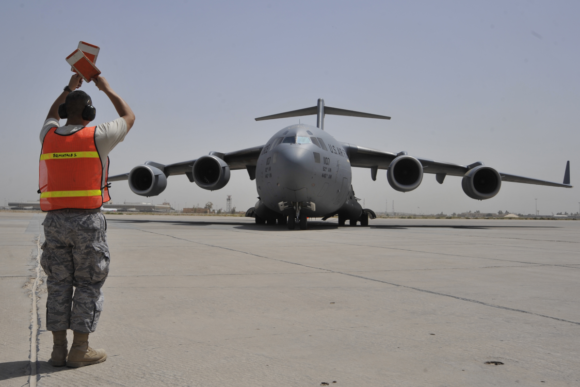
What Are Space-A Flights (AKA, Military Hops)?
Are you eligible for a space-a flight, how does space-a travel work.
1. Identify Your Destination and Possible Routes
2. Follow the Space-A Flight Schedules of the Passenger Terminals You May Use
3. sign up to travel from all possible starting locations, 4. mark yourself present within 24 hours of roll call, 5. listen for your name during roll call, 6. check your luggage and obtain your boarding pass, 7. board the aircraft and pick your seat, what to expect on a space-a flight, pros and cons of flying space-a, the pros: what are the advantages of flying space-a, the cons: what are the disadvantages of space-a, when should you use space-a, what would a seasoned space-a traveler recommend.
Update: On April 22, 2022, the Office of the Under Secretary of Defense lifted all restrictions on Space-A travel. These restrictions were put in place in March 2020 to limit the spread of Covid-19. Mask mandates and medical screening protocols may still apply.
Looking for a way to save money on travel ? Flying space-available (Space-A) on a military flight can be a fun and inexpensive way to see the world, as airfare to and from U.S. military bases can cost you next to nothing.
Flying Space-A on military aircraft is very different from using commercial air travel, and you can’t just call a military passenger terminal and book your flight. It’s worth learning how Space-A travel works so you can take advantage of this incredible privilege available to eligible members of the military community.
After military flights accommodate all required passengers and cargo, they often release extra seats to service members, retirees and their families. These eligible passengers can “hop” on the flights on a space-available (Space-A) basis. This is where the term “military hop” comes from.
Because these are military, not commercial, flights, the military mission is always the priority. You may fly on a commercial plane, but you could also be in a cargo plane or fuel tanker.
See What You Qualify For
Select a VA Home Loan Option to Continue:
There are six categories, or “cats,” of eligible Space-A travelers, depending on their duty status and the reason they are traveling.
Those in lower-numbered categories receive higher priority for available seats.
Here is a summary of the Space-A travel categories, according to the Military OneSource website :
Cat 1: Emergency leave unfunded travel
Cat 2: Accompanied environmental and morale leave (EML)
Cat 3: Ordinary leave, service members’ relatives, house-hunting permissive temporary duty (TDY), Medal of Honor holders , and foreign military; also includes unaccompanied dependents of service members deployed for more than 365 consecutive days.
Cat 4: Unaccompanied EML; also includes dependents of service members deployed between 30 and 364 consecutive days
Cat 5: Permissive TDY (non-house-hunting), student travel, and post-deployment/mobilization respite absence; also includes unaccompanied dependents of service members stationed outside the continental U.S. (OCONUS)
Cat 6: Military retirees, their dependents, military reserve, Reserve Officers’ Training Corps (ROTC) members and veterans who are 100% disabled
It is important to know your category when planning your Space-A travel because your category determines when you can sign up, what paperwork you need, and where you are eligible to fly. Table 3 in Section 4.11 of Department of Defense Instruction 4515.13 has more details on eligibility by category and approved geographical travel segments.
Eligibility Note for Veterans with a 100% Disability Rating :
According to the AF.mil website , “veterans with a service-connected, permanent disability rating of 100 percent will be able to travel in the Continental United States or directly between the CONUS and Alaska, Hawaii, Puerto Rico, the U.S. Virgin Islands, Guam, and American Samoa (Guam and American Samoa travelers may transit Hawaii or Alaska); or traveling within Alaska, Hawaii, Puerto Rico, or the U.S. Virgin Islands on flights operated by Air Mobility Command.”
Disabled veterans must have a DD Form 2765, Defense Department ID Card (Tan), to fly Space-A.
The better you understand how to fly Space-A, the greater your chances of having a successful trip.
The first step is to learn which bases have regular flights to where you want to travel. This list of worldwide destinations where Space-A travel may be available includes profiles of some of the terminals and information about typical flight destinations. You’ll want to begin following some of their Space-A flight schedules, which we’ll discuss in the next step.
You may find several possible routes to your desired destination. For example, if you are on the East Coast and want to fly to one of the common destinations, including Spain or Germany, you will likely be able to travel from several nearby bases. Travelers from other parts of the U.S. may need to take two or more hops to get there.
The Space-A Travelers Facebook group can help you put together a flight plan to your destination. You can ask questions and find information about flying to and from specific locations.
You may have to combine Space-A travel with other transportation. For example, you may need to fly or drive to a base with regular Space-A flights to your desired destination. Or you may need to take a train or flight from an overseas base to your final destination.
The Air Mobility Command website maintains a list of all the military passenger terminals , as well as their contact info and links to their websites and Facebook pages.
You’ll find a 72-hour flight schedule for most terminals on their Facebook pages or the AMC website. The schedules include trip destinations, the number of Space-A seats and the “roll call” time. The roll call time is when terminal staff announces who has been selected for the flight.
You may also find information about recently departed flights, including how the number of Space-A seats and how many passengers competed for those seats.
Click here for more details on how to read the Space-A schedules on Facebook .
When you monitor the flights that depart from your target passenger over several weeks or months, you’ll notice patterns in the location and frequency of their missions.
Determine all the terminals you could depart from to reach your desired destination. You’ll increase your chances of success by signing up to fly from all of them. Signing up is free and takes only a few minutes.
The AMC website details the sign-up options, including the required information. You can sign up through their website, by email or in person at the terminal. You can also use the Take-A-Hop app (which costs $6.99). If you’re signing up for several terminals, email and the Take-A-Hop app are the easiest ways to do so.
The sooner you can sign up, the better, as priority within each category is based on the sign-up date and time. So sign up as early as possible. At most terminals, your sign-up is valid for up to 60 days.
Keep in mind that your category may affect how early you can sign up for Space-A travel. For example, active-duty service members (Cat 3) must be on leave before they can sign up. Those in Cat 3, however, have precedence over those in Cats 4 through 6, regardless of when they signed up.
You must mark yourself present at the terminal before roll call to let the staff know that you are competing for the flight. You can do so anytime within 24 hours of the scheduled roll call. Note: roll call times can change unexpectedly, so continually monitor the terminal’s 72-hour flight schedule to ensure you get there in time or, better yet, call the terminal to confirm.
Bring your military ID and any necessary documents, such as your passport, your leave form or your EML orders. If you are an unaccompanied dependent, you’ll need a memo from your sponsor’s command. Also bring a copy of your sign-up email as a backup to prove your sign-up date and time.
At roll call, terminal staff will announce how many Space-A seats are available for the flight and then the names of the selected passengers, beginning with those in the highest-priority category.
If they call your name, go to the desk and confirm that you and any dependents traveling with you are present. You’ll need to show your military ID and any required paperwork, as well as ID cards for passengers older than 10 years old. For younger passengers, bring their passports or MilConnect printouts that show the Department of Defense ID numbers.
If they don’t call your name, don’t leave the terminal just yet. Sometimes last-minute Space-A seats become available, so stay at the terminal until boarding time.
Once you and all members of your traveling party, along with all your luggage, must be present when the baggage check begins. This may be right after roll call, or it may be several hours later. You will need to stay in the terminal, as boarding times, like roll call times, can change without notice.
The AMC website’s FAQ page includes detailed information on baggage allowances. Because smaller aircraft may have different weight limits for luggage, it’s best to check ahead of time.
You will generally be allowed to check two pieces of luggage weighing up to 70 lbs each. Similar to many commercial flights, you can also bring one piece of carry-on luggage that fits under your seat or in the overhead compartment. You can usually check car seats and strollers, and they won’t count toward your baggage allowance.
AMC terminals follow the Transportation Security Administration’s baggage screening guidelines , so check their website ahead of time to see what you can bring in your carry-on bag, and what you must put in checked luggage.
Check if meals are available on the flight, as you’ll pay for these when you check your luggage. Some locations offer simple box lunches for a nominal cost.
If you are flying Space-A on a Patriot Express flight , your boarding pass will list your assigned seat.
When terminal staff announces boarding, you’ll go through security and wait in a secure area. With most flights, a bus will take you to the aircraft, and you’ll board from the tarmac.
On most Space-A flights, you’ll choose your seat when you board. On Patriot Express flights, your boarding pass will list your assigned seat.

Check your VA Home Loan eligibility and get personalized rates. Answer a few questions and we'll connect you with a trusted VA lender to answer any questions you have about the VA loan program.
Patriot Express flights offer amenities, including meals and in-flight movies.
Other Space-A flights do not. Snacks and water may be available, but it’s best to be prepared and bring your own.
Seating depends on the type of aircraft. Some have seats that are comparable to commercial airlines. Others have web seating along the sides of the plane. If this is the case, you can stretch out if there’s room.
Patriot Express flights are climate-controlled, but other military aircraft are not. They are often cold or hot, so dress in layers. They can also be loud. The crew usually provides foam earplugs, but it’s a good idea to bring your own.
There are advantages and disadvantages to Space-A travel.
Space-A flights can save you hundreds or thousands of dollars over commercial airlines, which is a clear advantage. The only costs you might incur are a low per-passenger fee on Patriot Express flights, and you may be able to purchase low-cost meals at some terminals that offer meals for purchase.
When you land, you’ll be able to access base resources, including overnight base lodging and the commissary. You may even be able to purchase discount tickets to local events and attractions through the base’s Information, Tickets and Travel office (ITT).
Being able to stretch out on some aircraft can be another advantage over flying economy in a commercial plane.
If you’re traveling with small children, you may also find that other passengers are more supportive than with a commercial airline.
And, of course, there may be a greater sense of adventure with Space-A travel.
- Free or low-cost air travel
- Access to base amenities (Base Exchange, Commissary, MWR, ITT, etc.)
- Possibly more space to spread out compared to commercial airlines
- It’s an adventure!
Space-A travel is less predictable than flying commercially. Passenger terminals post flight schedules only 72 hours in advance, and you won’t know if you got a seat until the last minute.
Peak travel times, including summer, winter holidays, and even spring break, are even more competitive. You may need to be more flexible about when you travel and even where you’ll go.
You may incur other costs with Space-A travel, such as transportation to the base you’ll be flying from. You may need to wait for a flight home–possibly for days–and the costs of lodging and meals can quickly add up.
Finally, Space-A travel, unless you’re on a Patriot Express flight, is bare bones. You may find it cold, loud, and uncomfortable.
- Travel and schedules can vary.
- Seats aren’t guaranteed — you must have flexible travel plans!
- Travel can be difficult during busy times (summer PCS season, holidays, etc.).
- Lodging, meals and transportation costs can add up.
- Military aircraft can be cold and uncomfortable.
If you have the time, flexibility, and patience to wait for a flight, Space-A travel can offer you an adventure while saving you a lot of money. If you’re traveling for an event, such as a wedding, and must arrive by a specific time, Space-A is not the best way to travel, especially if it’s during the peak seasons of summer, winter holidays, and spring break.
Flying Space-A requires planning, patience, and flexibility. Learn as much as you can about the process, and also research desired destinations and passenger terminals so that you can put together a successful flight plan.
When you are ready to leave, make sure you always have a backup plan and ensure you have enough money to pay for commercial transportation if Space-A doesn’t work out. Also, be prepared for a multi-legged journey–several shorter hops that bring you closer to your destination rather than one long direct flight.
About Post Author
Stephanie Montague
Stephanie Montague is the founder of Poppin’ Smoke , a website designed to encourage members of the military community to use their military benefits for travel. Stephanie and her husband have been traveling the world since he retired from the Army in 2015. Through Poppin’ Smoke, Stephanie shares everything they learn about Space-A travel and using military benefits while abroad.
See author's posts
Posted In: Military & Veterans Benefits
More From Us

VA Loan Rates – Compare Today’s VA Home Loan Rates

VA Cash-Out Refinance Guidelines 2024

Military Retirement Plans
Reader interactions, leave a comment: cancel reply.
About the comments on this site:
These responses are not provided or commissioned by the bank advertiser. Responses have not been reviewed, approved or otherwise endorsed by the bank advertiser. It is not the bank advertiser’s responsibility to ensure all posts and/or questions are answered.
ray maring says
December 29, 2023 at 9:17 am
Thank you for hosting this information. I am a guardsman, retired and are interested in traveling now.
Load More Comments
As Featured In:
The Military Wallet is a property of Three Creeks Media. Neither The Military Wallet nor Three Creeks Media are associated with or endorsed by the U.S. Departments of Defense or Veterans Affairs. The content on The Military Wallet is produced by Three Creeks Media, its partners, affiliates and contractors, any opinions or statements on The Military Wallet should not be attributed to the Dept. of Veterans Affairs, the Dept. of Defense or any governmental entity. If you have questions about Veteran programs offered through or by the Dept. of Veterans Affairs, please visit their website at va.gov. The content offered on The Military Wallet is for general informational purposes only and may not be relevant to any consumer’s specific situation, this content should not be construed as legal or financial advice. If you have questions of a specific nature consider consulting a financial professional, accountant or attorney to discuss. References to third-party products, rates and offers may change without notice.
Editorial Disclosure: Editorial content on The Military Wallet may include opinions. Any opinions are those of the author alone, and not those of an advertiser to the site nor of The Military Wallet.
Information from your device can be used to personalize your ad experience.

Quickstart Guide to Military Space-A Flights
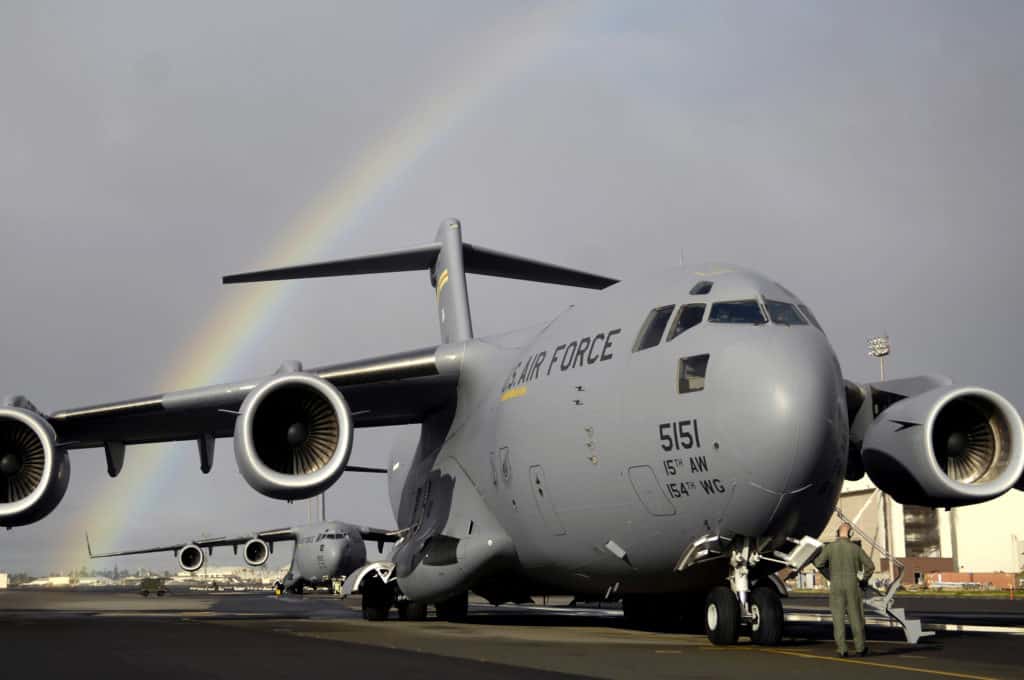
Military space available (Space-A) flights have been a major element of our strategy for saving money on our frequent travels since my husband retired from the Army in 2015. We’ve flown Space A to Europe, Hawaii, Alaska, Japan, Korea, and many places within the continental U.S.
I estimate that during our last 8+ years of world travel, we’ve saved more than $20,000 by taking military hops. Our experiences have been overwhelmingly positive, and whenever it’s a viable option, Space A (formerly called “MAC flights”) is my preferred way to fly.
Talking with others about our travels, we were surprised to realize how few military folks knew about Space-A travel, let alone had used it.
Even those who knew it was an option were reluctant to give military flights a shot. They had heard that you wait around too much, the aircraft have too many maintenance issues, or the flights are canceled at the last minute.
The bottom line is yes, those things do happen. Flying Space A requires patience and flexibility, and it’s not a good choice for all circumstances . But if you’ve flown a civilian airline lately, you know that all those inconveniences happen with commercial flights, too. The difference is, Space-A flights are free!
This Quickstart Guide explains everything you need to know about how to fly Space A. After reading it and following the related links within the article, you should be all set to take your first Space-A journey!
If you’re NOT new to military Space-A travel, you should still read these lessons learned from our experiences and our recommended strategies for having a successful journey when taking military hops.
* * * For a printer-friendly version of this Quickstart Guide to Space-A Flights, click here. * * *
This page contains affiliate links. For more information, please see our disclosure .
Contents (click to expand)
How Space A Flights Work
Space available flights, a.k.a “MAC flights” or “military hops,” are military operational flights that have extra seats. The military mission is the priority, and the Space-A passengers are essentially cargo.
There is no charge to fly Space-A except on Patriot Express (PE) flights , for which Space-A passengers must pay a small per-person tax.
Eligible members of the military community may “hop” a flight with open seats, but the system is based on priority.
Space-A Travel Categories: Who Can Fly Space-A?
Space-A passengers are divided into six Space-A categories or “Cats:” 1 is the highest and 6 is the lowest.
Available seats on the aircraft are first offered to travelers in lower-numbered categories. Any remaining seats can be used by travelers in higher-numbered (lower priority) categories. Priority within a category is based on signup date, as discussed below.
Passengers traveling on emergency leave are Cat 1 and are the highest priority.
In the context of leisure travel, active duty service members traveling with or without dependents on environmental morale leave (EML) are Cat 2 and on ordinary leave are Cat 3.
Unaccompanied family members of military personnel are Cat 4 or Cat 5 , depending on the circumstances.
Space-A Category 6 includes several different groups of passengers:
- Military retirees
- Veterans with a permanent service-connected disability rated as total (100% disabled veterans)
- Surviving spouses of deceased service members/retirees.
All travelers must have a valid Department of Defense identification card to fly Space-A. A Veteran Health Identification Card (VHIC) or other ID card issued by the Department of Veterans Affairs does not suffice.
If you are a disabled veteran who is not retired from the military, and your rating is less than 100%, click here to learn about the travel-related DoD benefits you can use !
Important Note: Certain travelers within Cat 6 have restrictions on where they can fly Space-A.
Reservists , “Gray Area” retirees (retired members of the National Guard and Reserves who are under the age of 60 and/or not yet receiving retirement pay) and 100% disabled veterans who are not also retired from the military are not eligible to fly Space-A to/from foreign countries . They can take military hops within the contiguous United States (CONUS) and to/from Hawaii, Alaska, Guam, and other U.S. territories.
Surviving spouses are only eligible to fly Space-A within CONUS.
The geographic restrictions for travelers within Category 6 are summarized in the table below.
Category 6 Space-A Travel Eligibility
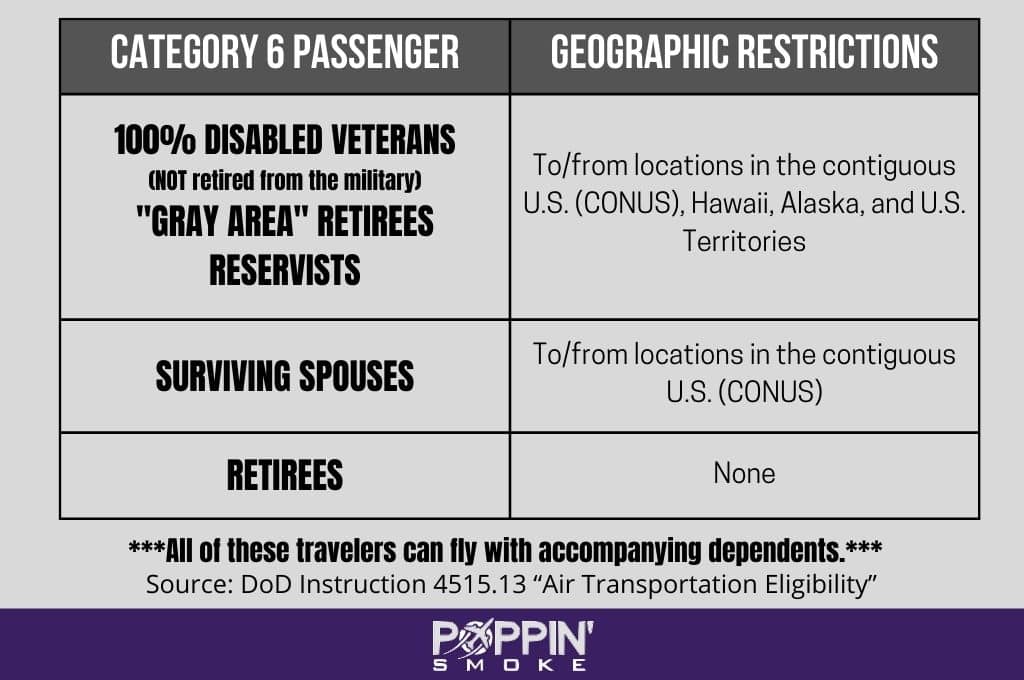
Please note that the list of eligible passengers discussed above is not exhaustive. Other passengers, including certain civilians within the Department of Defense, are eligible to use military space-available travel under various circumstances.
For a complete list and more information on eligibility by category, view Table 3 in Section 4.11 of DOD Instruction 4515.13 .
Military Dependent Space-A Travel Eligibility
Dependents of active duty service members are eligible to fly Space-A without their sponsor under certain circumstances explained here .
Dependents of retirees, Reservists, “Gray Area” retirees, 100% disabled veterans, and surviving spouses are eligible to fly Space-A, but only when accompanied by their sponsor.
The following dependents and family members are NOT eligible to fly Space-A at all:
- Ex-spouses of service members or retirees
- A service member’s or retiree’s parents, siblings, or any other family members who are not the sponsor’s dependents
Dependent children can fly Space-A with their sponsor or eligible unaccompanied parent. They are not authorized to travel with other military families.
Pets may not fly Space-A unless they are registered service animals.
The Space-A Flying Process: How to Take a Military Hop
Here is a summary of how to fly Space-A. For more details, visit the Air Mobility Command (AMC) website .
1. Space-A Signup
The first step is to sign up with every military passenger terminal from which you might originate travel (including your destination). Keep in mind that you are not signing up for a particular flight. You are signing up to compete for any flight with Space-A seats at a given terminal.
You can sign up in one of several different ways:
- Using the Space-A travel app, MilSpaceA (the app is no longer available for new downloads)
- Through the AMC website’s online form
- In person at the terminal
E-mail and the MilSpaceA app allow you to sign up with multiple terminals at once.
If you sign up via e-mail, you must include all of the information listed in the “Space-A Sign-Up Options & Required Information” section of the AMC website’s Space Available Travel page (see screenshot below).
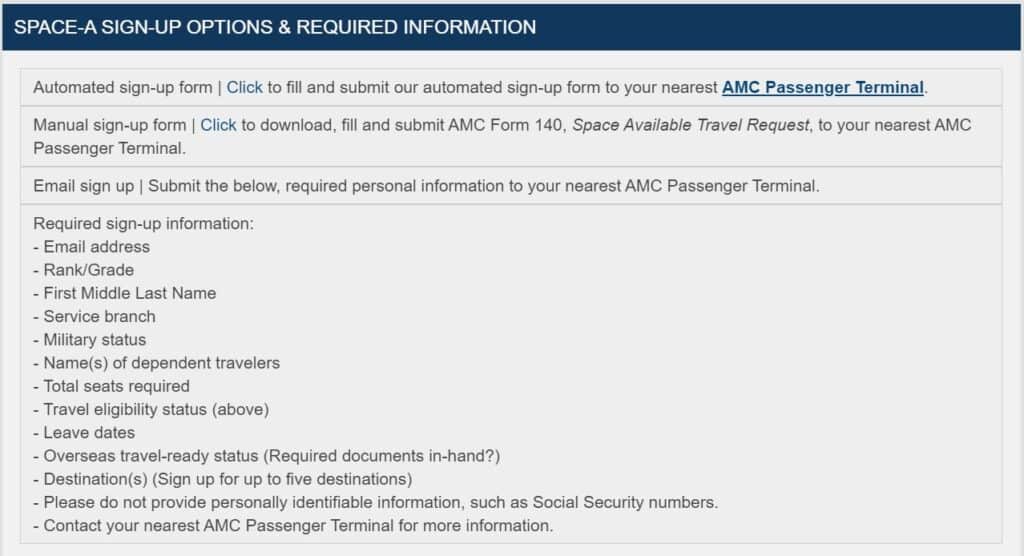
You can find current e-mail addresses for all military passenger terminals in the Passenger Terminal Directory below the Space-A Sign-Up section.
Priority within a Space-A category is based on signup date, so the earlier you sign up (maximum 60 days before your travel date at most locations, 45 days or less at some Navy locations), the better. Active duty members cannot sign up for Space-A travel until they are on leave.
| Click here for Space-A signup tips and examples specific to retirees (Cat 6).
Many terminals will not reply to confirm receipt of your signup. Remember to retain and print copies of the e-mails you send, because they serve as proof of your signup date.
If you want to confirm that a military passenger terminal received your signup, try calling them directly. Do not send another signup e-mail, because your place on the virtual list is based on whatever signup is most recent.
2. Tracking Space-A Flight Schedules
Track flights (also referred to as “missions”) from your desired departure base(s). Flight schedules and tentative seat counts are available up to 72 hours before a flight.
If you monitor flight schedules out of your departure base for several weeks or months prior to travel, you may see patterns in how often they have missions to particular destinations and how many Space-A passengers get seats.
Also, to figure out which bases have regular flights to your target destination, start with Poppin’ Smoke’s Space-A Location Guides .
Most military passenger terminals maintain a web page or Facebook page on which they publish flight information for the upcoming 3 days. A Space-A flight schedule lists the destinations, anticipated number of Space-A seats, and the “Roll Call” time, which is the time at which passenger terminal staff announce the names of passengers selected for the flight.
(You can also obtain information on Space-A flights and Roll Call times by calling the terminal directly. Most military passengers have an automated flight recording).
Many passenger terminals also publish data on recently-departed flights, including the number of Space-A seats released.
Click here for a detailed explanation of where to find Space-A flight schedules and how to read them.
3. Check-In or “Marking Yourself Present”
Within 24 hours of your target flight’s Roll Call, go to the terminal and speak with the staff to mark yourself present.
Bring your military ID, passport (if traveling to/from a foreign country), and any required paperwork, such as your leave form if you are active duty or the memo from your sponsor’s command if you are a dependent traveling unaccompanied .
You should also bring a copy of your signup e-mail in case the terminal does not have you in their system. Most terminals will accept your e-mail as proof of your sign-up date and time.
You must mark yourself present before Roll Call starts. As long as you have signed up in advance, there is no advantage to marking yourself present earlier than other passengers.
Arriving one or two hours prior to Roll Call is usually sufficient (closer to three hours for a Patriot Express mission if you did not yet mark yourself present), but in the 12 hours or so before your flight, check the schedules frequently to ensure Roll Call hasn’t changed.
| Related Reading: Lessons Learned from Flying Space-A Across the World
Many passenger terminals have a screen or printed document near the terminal desk that displays a list of passengers who are marked present and are “competing” for the flight. Make sure your name is on that list along with the accurate number of dependents traveling with you and your correct date of signup. If not, speak with the terminal staff.
4. Roll Call
The time listed on the Space-A flight schedule is usually the Roll Call time. When Roll Call begins, terminal staff announce how many Space-A seats are available and read the names of the passengers selected. They begin with the passengers in the lowest-numbered (highest priority) category and work their way down the list.
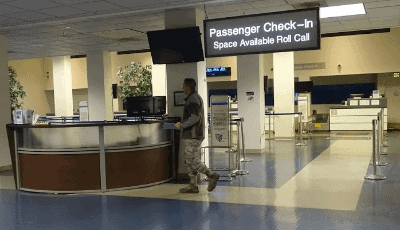
When they call your name, go to the desk and confirm that you and any dependents traveling with you are present. Show your and your dependents’ military ID cards along with the aforementioned paperwork.
DoD uniformed services ID cards are required for all passengers over the age of 14. If you are traveling with children younger than 14 who do not have a military ID card, they must have a federal, state, local, or tribal government issued ID.
After Roll Call, you might go directly to luggage check, or you may wait several more hours, but you won’t know the schedule in advance.
At the time of Roll Call, you must be “travel ready.” That means you and any family members traveling with you are in the terminal with all of your luggage and required documentation .
Don’t plan on waiting until after Roll Call to go back to your hotel or return your rental car, because you might not have time.
Note: If you’re not selected during Roll Call, stay in the terminal, at least until the flight boards. Sometimes additional Space-A seats are released at the very last minute.
Virtual Roll Call
Some passenger terminals offer Virtual Roll Call (VRC) for select missions. In theory, having VRC means passengers do not have to be present at the terminal for Roll Call. When there is a VRC for a particular flight, that information is noted on the flight schedule.
With VRC, you must still go to the terminal within 24 hours of Roll Call to mark yourself present (and verify that they have your e-mail address). About an hour before the in-person Roll Call, the terminal sends you a “Roll Call Notification” e-mail.
If you don’t respond promptly, they take you out of the running. If you do respond, they eventually send you one of two e-mails: a “Flight Selection Notification” with instructions to go directly to the terminal to check your bags, or a “Non-Selection Notification,” which means you should activate Plan B ( always have a Plan B when flying Space-A!).
In our limited experiences with VRC, it has not worked quite as planned. We had to go to the terminal for Roll Call anyway. VRC is a relatively new process, so they may still be working out the kinks. In the meantime, showing up in person is the best way to ensure you don’t miss any communication.
5. Bag Check
When it’s time to check bags, you, your dependents, and all of your luggage must be present.
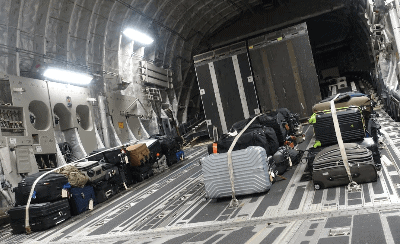
On most Space-A flights, each passenger can check two bags of up to 70 lbs each. You can also check car seats, which do not count towards your baggage allowance.
Weight limits on some smaller aircraft are as low as 30 lbs. If you cannot meet those requirements on the weight-restricted aircraft, you are not eligible for the flight.
The AMC website has more information about baggage for Space-A travelers in their FAQs .
You cannot access your checked luggage during the flight, even though you may see it strapped down right in front of you. Make sure you have everything you’ll need in your carry-on bag.
| Related Reading: What to Wear and Bring on a Space-A Flight
During baggage check, you can request a meal, (if meals are offered — usually a box lunch with sandwich, chips, cookie, and drink), which costs $5 – $10, depending on the base. Make sure you have cash in USD and a card for payment. Some terminals only accept one or the other.
At this point in the process, you will also receive your boarding pass, which you should review carefully to ensure it lists the correct final destination ( here’s why ).
After you’ve checked your bags and have your boarding passes, you are “manifested” on the flight. Terminal staff will tell you the estimated boarding time, but keep in mind that it often changes without notice, so stay in the terminal.
6. Boarding
When boarding begins, all passengers go through security. Military passenger terminals follow TSA regulations, so you have the same restrictions for carry-on items as on civilian planes.
You sit in a secure area of the terminal until it’s time to board. At most locations, a bus takes you to the aircraft, and you board the plane from the tarmac.
If you are on a Patriot Express flight, your boarding pass will list your assigned seat. On other military aircraft, you select your own seats on a first-come, first-served basis. The crew may allow passengers with small children to board first, but not always.
At some point during the boarding process, crew members will offer passengers foam earplugs.
Unless you are on a Patriot Express, which has full in-flight service, most Space-A flights are “no-frills.” The crew provides water, and sometimes chips or cookies, but you must get those refreshments yourself.
Depending on the type of aircraft and how much space there is, you may be able to stretch out across a few seats or even sleep on the floor (see the section on Military Aircraft below).
Related Reading: How to Choose a Sleeping Mat for Space-A Travel
8. Arriving at Your Destination
After landing, you take a bus from the aircraft to the terminal, where you collect your checked bags.
Passenger terminals generally have information and phone numbers for local rental cars, base lodging , and other resources. You can also use UJ Space A Info to quickly search for local information related to military bases around the world.
If you’ve flown to a foreign country, you may pass through customs, or you may need to go to an off-site location to have your passport stamped. The process varies by country and base.
Use Poppin’ Smoke’s Space-A Location Guides to research the customs and immigration process at your destination. The Guides also have detailed information about lodging, ground transportation, and other logistics for major Space-A hubs worldwide.
When (and When Not) to Fly Space-A
So now you know how Space-A travel works when all goes smoothly. Of course, it doesn’t always happen that way.
There are many situations when flying Space-A is not the best option. If you are going on a short vacation (less than 2 weeks) with little flexibility or you are traveling during major holidays , relying on Space-A is risky.
Most experienced Space-A travelers also avoid flying Space-A during summer PCS season (late May through early September), particularly to OCONUS destinations.
In those situations, it’s better to plan ahead and try to find cheap military flights from airlines that offer discounts or use a site like Skyscanner to find the best commercial fares.
If you are traveling solo, you have a better chance of getting a seat, even during busy periods. Many other Space-A travelers are couples or families, and even if those groups are in a higher category than you, when there is only one open seat left, a solo traveler will get it.
Packing light also increases your chances of getting a seat. Some flights have baggage weight restrictions that will take most other passengers out of the running.
You can take some of the risk out of flying Space-A and boost your chances of having a successful trip by following these strategies and tips and monitoring the Space-A flight schedules to make informed decisions about what flights are most promising.
How to Prepare for Space-A Travel
Knowing what to expect at the AMC passenger terminal and on the planes can help you have a more comfortable journey.
What to Expect at Military Passenger Terminals
Passenger terminals vary widely in terms of their hours, services available, and rules. Some have a USO, a snack bar, a children’s area, and showers, while others have little more than a check-in desk and a few chairs.
SpaceA.net (an unofficial site) has information on specific services available at each military terminal.
Most terminals discourage passengers from getting too comfortable and falling asleep. The chairs generally have fixed armrests that prevent you from stretching out across the seats. Also, there are often signs requesting that you not lie on the floor. Be prepared with a good book and plenty of activities for the kiddos!
Many military passenger terminals have WiFi, but it’s not always very strong, so remember to download any books, movies, or activities you may want ahead of time.
I recommend saving the contact information for the passenger terminals you anticipate using so that you have it handy if you need to call or e-mail with questions.
Finally, keep in mind that most passenger terminals are NOT open 24 hours, so you cannot spend the night there. Even if you arrive on an aircraft that has an overnight layover, staying in the terminal is not an option. Click here to read tips and tricks for reserving base lodging.
What to Wear and Bring on Military Aircraft
Depending on the type of aircraft and how it’s configured, you have different considerations for comfort. If it’s a Patriot Express (a.k.a. a “rotator”), it’s simply a regular passenger plane. Most other Space-A flights are “organic aircraft,” a.k.a. military planes.
For all organic aircraft, three tips apply:
- Dress in layers . It can be very cold or very warm, depending on the type of aircraft, where you’re sitting, and crew preference. We use this layering system so that we can easily adjust to the temperature. I occasionally see passengers (especially children) wearing shorts, but I don’t recommend it unless you have a pair of sweatpants handy.
- Bring a small, inflatable mat and a blanket or sleeping bag . You can use an inflatable mat like this one to lie on the floor or stretch out across multiple seats. The blanket/sleeping bag is important for warmth.
- Bring hand wipes . The lavatory sinks generally don’t have running water. Instead, there is a pile of antiseptic wipes, but often not enough to last for the entire flight. Bring your own stash of hand wipes.
| Click here for a full Space-A packing list .
While you could fly on one of more than a dozen different types of DoD aircraft, the ones below are the most common:
C-5 : This is the largest aircraft in the Air Force. If the 72-hour schedule indicates there are 73 seats available, the aircraft is probably a C-5. Seats are configured just like a commercial airplane, but they face the rear of the aircraft, and you have more legroom. If the plane isn’t crowded and you are lucky enough to have your own row, you can stretch out (unlike in the passenger terminals, you can raise the armrests!).
C-17 : The first time we traveled Space-A on a C-17, all passengers were sitting in jump seats along the sides of the aircraft (facing the middle). With this configuration, you can lie down after the plane reaches altitude if there is room on the floor and the crew authorizes you to do so.
On our first flight from Andrews AFB to Germany we didn’t plan ahead and had to sleep on a wool blanket provided by the crew (it was still more comfortable than sitting in the economy section of a commercial flight).
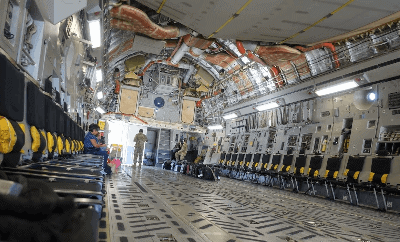
The next time we flew in a C-17 with that configuration, we were prepared with a couple of inflatable pool rafts. The rafts provided much more cushion than the wool blankets and were pretty inexpensive. Unfortunately, they were exhausting to blow up and nearly impossible to drain and fold down to an easily-transportable size.
Now we have this small easily-inflatable sleeping pad . It weighs only 18.6 oz, inflates with 15 – 20 breaths, and easily deflates to fit back in its carrying bag.
| Related Reading: How to Choose a Sleeping Pad for Space-A Travel
We also flew in a C-17 configured with regular passenger seats filling most of the bay. Some passengers chose to sit along the sides anyway, but we preferred real seats to jump seats. With that configuration, there was very little space to lie on the floor.
C-130 : This a prop plane, so it is noisier, slower, and bumpier than a C-17. It has the same open bay configuration with web seating along the sides. If there is room on the floor, you can lie down like on a C-17.
KC-10/KC-135: These are tankers used to fuel jets while in the air, and they may perform that mission with Space-A passengers aboard. The KC-10 usually has regular airline seats and about twice the passenger capacity of the KC-135. The latter generally has web seating along the sides of the aircraft.
Click here to read about our Space-A journey from Japan to Germany. We flew in KC-135s the whole way!
“VIP” aircraft (C-9/C-12/C-21/C-40): These aircraft have regular passenger seats and generally do not have space to lie on the floor. The baggage weight limit is often much lower (usually 30 lbs. for C-12 and C-21, 50 lbs. for C-9 and C-40) due to aircraft baggage storage limitations and/or fuel requirements to the destination.
Final Advice
Think of Space-A travel as an adventure. Along the way, you will meet other travelers who remind you how helpful and supportive the military community can be.
Hitching a ride with a military mission is a privilege and, for dependents who have never flown in a military aircraft, a very unique experience. If you think of your journey in this way, you will be better-prepared to handle any parts of the process that don’t go as planned.
Recommended Reading
If you’re looking for more information about flying Space-A, these articles are good reading:
Research Your Trip With These Space-A Location Guides
What to Wear and Pack for a Military Space-A Flight
Lessons Learned from Flying Space-A Across the World
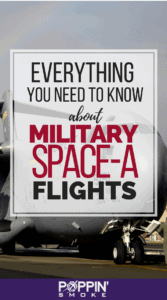
Space A Travel: Everything You Need To Know
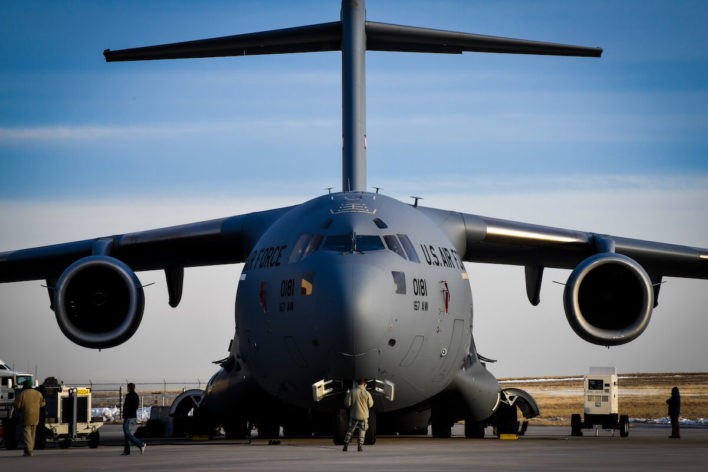
Julie Provost
What is Space-A Travel?
Table of Contents
Space-A is being able to travel on DOD aircraft for free or at a limited cost. The flights you take are on a space-available basis, and the number of passengers they take will depend on the flight. Space-A can get you to many different places worldwide, but some locations are more challenging to fly to than others.
When you fly Space-A, you have to do some planning and research. You must know which Space-A category you fall into and what that will mean for flights. You will need to make sure you are eligible and have all the right paperwork. You can travel with children, but you do need to be prepared for the whole trip, and that might be more difficult than flying commercially.
What Are the Different Categories for Space-A Travel?
Those who are eligible for Space-A typically fit into one of six different categories. These categories help determine how likely it is that you can fly.
Category I : Emergency Leave Unfunded Travel- For emergency situations only.
Category II: EML (Environmental Morale Leave) for Active Duty and dependents.
Category III: Active Duty Ordinary Leave- This category also includes those on Terminal Leave as well as their accompanied dependents, those on House Hunting Permissive TDY, Medal of Honor Holders, and dependents of deployed service members as long as they are deployed for 365 consecutive days or more. It is important to note that these dependents will be selected behind active duty members no matter when they sign up.
Category IV: Unaccompanied Dependents on EML or dependents whose sponsor is deployed between and including 30-364 days as well as DODDS teachers on EML during the summer.
Category V: Unaccompanied command-sponsored and non-command-sponsored dependents of active duty, permissive TDY (non-house hunting), and students.
Category VI: 100% disabled veterans. Retirees as well as their accompanied Dependents, reserve, ROTC, NUPOC, and CEC. The DoD adds, “Surviving Spouses of service members who died while on active duty, inactive duty training, or annual training status. as well as retired military members, and their accompanying dependents.”
Can Retirees Fly Space-A?
Retired military members who are issued DD Form 2 and eligible to receive retired or retainer pay may use Space-A travel according to the Air Mobility Command Space-A official site.
RELATED : Disabled Veterans Can Now Fly Space-A
Are You Able to Travel Without Your Service Member?
Only eligible dependents whose service member is stationed overseas can travel unaccompanied and would do so as CAT-V, with some CONUS restrictions. Those whose service member is deployed for 30 days or more may travel unaccompanied anywhere that Space-A is allowed at a CAT-III, after active duty, or CAT-IV, based on how long they are deployed, as mentioned above. If your spouse is not deployed and stationed in CONUS, you can not use Space-A unless you are with your service member.
What About National Guard or Reserve Members?
At press time, Space-A travel is authorized for National Guard/Reserve components/members of the Ready Reserve and members of the Standby Reserve who are on the Active Status List.
What Do You Have to Do to Get On A Flight?
The first step is get authorized to travel on Space-A. This means starting leave if you are on active duty or getting a travel letter if you are an unaccompanied dependent. If you are a retiree, you should be authorized when you are ready to start the process.
- Sign up and register at the locations you plan to travel to and from. You can do this at some terminals through an online form, in person, by email, or by fax. This signing up doesn’t mean you are on a flight or have an exact flight time. What you will be doing is getting assigned a date and time. This will put you in front of anyone in your category who has a later date and/or time than you do.
- Sign up as soon as possible for as many places as you think you might go. If you are unsure where you will be flying from, sign-up for all potential places. You don’t want to sign-up too far in advance so that your sign-up expires before the date you want to fly. For active duty, you should sign-up as soon as your leave starts, and that sign-up should last until your leave is over. For non-active duty, sign-ups are valid for 60 days.
- Each sign-up location is independent. Call to verify that you are signed up and carry a printed copy of your emails verifying you have done so. That way, you can show that you should be on any list you need to use to travel.
Showing Up for a Flight
- Show up before any potential flight you want to take. Flights will get posted, and you can make your plan from there. You need to mark yourself “Present” for the flight you want to go on. This tells the terminal that you are there and will be ready to fly when the time comes.
- When exactly you are marked “Present” doesn’t matter as far as where you are in line; the date and time of when you signed up does, but you would need to be marked present within 24 hours of flight time.
- It is a good idea to get to the terminal, ready to fly with all of your bags and paperwork, about an hour before what is called “Show Time.” You would then mark yourself “Present” by checking in at the desk and wait until “Show Time.” At this point, you do not want to leave the area, even to grab a bite to eat. Times can change, and you want to be ready if that happens.
Show Time and Roll Call
- “Show Time” is when “Roll Call” can begin, and it is about 2-3 hours before it would be time to fly. You need to be aware of when “Show Time” is supposed to start, as well as what time you would fly if you make it on the flight. Always give yourself extra time.
- “Roll Call” is going to be when the date and time you “signed up” for that location and the category you are in come into play. With “Roll Call,” they start with CAT-I and go through all the way until CAT-VI or until they fill all the seats. For example, someone in CAT-IV, who signed up on June 1st at 10:30 am will be ahead of someone who signed up for CAT-IV, on June 1st, at 11:30 am. All of CAT-IV would be ahead of all of CAT-5. They might just have 10 seats, or they might have 50 seats, it depends on the flight, aircraft, and how much space they actually have on the flight.
- You will need to be right there during “Roll Call.” If you are somewhere else, and they call your name, and you don’t check-in, you will not make it on the flight. You will need to be travel-ready when this happens.
- Being “Manifested” means you are selected for a flight, and you will be going on this flight unless the flight itself is canceled or you get bumped for cargo. This is where you want to be.
- You can also be “Manifested Through,” which means you won’t have to compete for a seat on your second flight. However, you need to make sure you are “Manifested Through” to your end location. This, however, does not mean you have your round trip covered. You will have to compete for seats on your return trip.
How Much Does Space-A Travel Cost?
Many Space-A flights are free; however, if you take a Patriot Express flight, you may be charged a head tax and inspection fees. Bring cash for this flight, you may not be permitted to pay using a credit card.
You may also need to have extra money for possible stays in hotels, extra food, or even money for transportation. Because some flights get canceled, or it can be hard to get on right away, you might have to wait near the terminal for a few nights.
How Many Bags Can You Bring?
For Space-A, the nature of the mission determines how much baggage can be loaded. On some flights, you may be allowed to bring two pieces of luggage each, not to exceed 70 lbs. For others, there may be a requirement for the bags to be under 30 lbs.
Where Can You Go For Extra Help?
- The Air Mobility Command website – This is where you can read information about how Space-A works, sign up for flights, and more.
- SpaceA.net – An informational site about the ins and outs of Space-A travel.
Other Tips For Flying Space-A?
The main thing you need to remember is that Space-A is going to require some planning. You will need to spend some time researching where you will go, how many flights they have, and how easy it might be for you to get on a flight. Certain times of the year are busier than others, and you must bring your patience.
Flights can get delayed for days. You might go through the entire process and end up on a flight, only to have to get off and start all over again because there is something going on with the plane. You need to plan for if your first idea doesn’t work out.
There are a lot of benefits to flying Space-A. You can see the world and can do so without having to spend a lot of money, but you have to understand that you will have to work for it. Some flights will be easier than others, and you just never really know what you will find when you attempt to fly Space-A.
If you need to reach your destination by a certain date, Space-A might not be the best way to get there. Unlike a commercial airline, you are not guaranteed a time and a place to fly. Being flexible and understanding is a must. If you can go into Space-A with that mindset, you can enjoy everything Space-A has to offer.
- Airlines with Military Discounts
- Disabled Veterans Can Now Fly Space-A
- Delta Airlines Military Discount
- Summer Travel Discounts for Military Families
- Best Vacations for Military Families in the US
- Hotels with Military Discounts
Featured Posts
- Find Your Next Base: List of Military Installations by State
- Military Benefits Guide
- TRICARE Basics
- GI Bill Benefits Guide
- Guide to Private Life Insurance for the Military
- VA Home Loan Benefits Guide
- Naval Base San Diego Guide
- Los Angeles Air Force Base Guide
- Marine Corps Base Quantico Guide
Recent Posts
- Joining a Military Association
- What to Know About the VA Caregiver Support Program
- Lower TRICARE Copays For Specialty Drugs
- New Proposed Legislation Could Boost Military Pay, Childcare
- DoD Expands Military Spouse Employment Options Overseas
- Supreme Court Decides GI Bill Case In Favor of Veterans
- DoD Expands Universal Pre-K to “Most Schools”
- Resources for Disabled Veterans
- Foreclosure Avoidance for Veterans: Veterans Affairs Servicing Purchase Program
- Federal Income Tax Filing Extensions For Military Members
Most Popular Articles
- COLA to Increase 5.9% for Retirees, Disabled Veterans in 2022
- Costco Military Discount
- Fly for Less: Military Discount Flights for Veterans & Military
- Lowe’s Military Discount for Military and Veterans
- Disneyland Military Discount
- Military Discounts on Golfing & Golf Gear
- Disney World Military Discount
- Free TSA PreCheck for Military
- Waves of Honor: Discounted Admission for Military & Veterans
- Sam’s Club Military Offer
5 Military Automobile Discounts for 2024

Read More 883 WORDS
Atkins Military Discount

Read More 183 WORDS
Avocado Green Mattress Military Discount

Read More 228 WORDS
Find VA Approved Colleges that Accept Military & Veteran Benefits
Get Started
Search nearly 3000 VA-approved school profiles to find your perfect fit

Search form
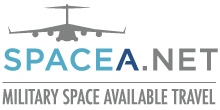
Space-A Basics
The Space-Available travel program is a travel benefit that allows authorized passengers to occupy DoD aircraft seats that are surplus after all space-required passengers and cargo have been accommodated. Space-A travel is allowed on a non-mission interference basis only. Space-available travel is a privilege (not an entitlement) available to Uniformed Services members and their dependents. The majority of Space-A flights are offered by the Air Force's Air Mobility Command (AMC) or the Navy and Space-A seats are normally free (there is a tax charged for AMC's Patriot Express flights). The most common destinations are in many parts of the USA (including Hawaii and Alaska), Germany, England, Spain, Italy, Japan, and South Korea. Less frequent destinations (some very rare) could include South and Central America, Africa, and Australia. Usually, the best time to obtain a seat(s) is when dependent children are in school. For more details, read on!
Basically, your travel status "category" is your priority. There are six categories (CAT-I thru CAT-VI). CAT-I is highest priority (first to get offered a Space-A seat) and CAT VI is the lowest Category (last to get offered a Space-A seat after CAT I thru CAT V). A GENERIC explanation of each category is:
- CAT I: Emergency Leave Unfunded Travel
NOTE: Any Space-a passenger (including retirees) "may be" (no guarantees) upgraded by the local installation Commander (often delegated to the Chief of the Passenger Service) to no higher than the bottom of CAT-I for leave under emergency conditions (unfunded) or extreme humanitarian reasons when validated by competent and formal authority such as American Red Cross notification, unit Commander’s memo, doctor’s letter, or other evidence. Emergency upgrade period for initial departure is usually limited to one week. Passengers will maintain the origin station upgrade until they reach the emergency destination; on return, passengers will return to their original Category.
- CAT II: EML (Active Duty and their accompanied dependents)
- CAT III: Active Duty Ordinary Leave (including Terminal Leave) and accompanied dependents,, House Hunting Permissive TDY, Medal of Honor Holders, dependents of deployed service members whose sponsor is deployed 365 consecutive days or more (selected behind active duty members regardless of date/time of sign up)
- CAT IV: Unaccompanied Dependents on EML or dependents whose sponsor is deployed between (and including) 30 to 364 consecutive days and DoDDS Teachers on EML During Summer
- CAT V: Unaccompanied Command Sponsored and Non-Command Sponsored Dependents of Active Duty, Permissive TDY (Non house Hunting), Students
- CAT VI: Retired and their accompanied Dependents, Reserve, ROTC, NUPOC, and CEC
If you are a dependent (sponsor stationed in CONUS and not deployed) then you are not eligible for UNACCOMPANIED Space-A Travel (except overseas for emeregncy) and therefore no Space-A Category). If you're not clear what category you are in you can find a more complete explanation of each category in DoDI 4515.13 , Section 4, Table 3 .
According to the regs, you can mark yourself "Present?" at anytime "within" 24 hours (some terminals that offer Virtual Roll Calls are 20 hours) prior to a Space-A Roll Call. The time you get marked "Present" is not a factor in the Space-A selection process so around an hour prior to Roll Call is usually sufficient time to get settled before a Roll Call. To mark yourself "Present" you need to arrive at the terminal with all travel documents (including your passengers) and proceed to the Passenger Service Desk and they will mark you "present." Once marked "Present" you'll be added to the Present List and then can compete for seats at the Space-A Roll Call for flights heading to your desired destination. If unsuccessful and your name falls off the "Present" List you'll need to get marked "present" again. Some locations purge their "Present" List at midnight so make sure you inquire about their local policy.
NOTE: November 2016: AMC no longer allows passengers to mark themselves "Present" remotely The test locations were Kadena, Charleston, McGuire, Spangdahlem, and Ramstein. Virtual Roll Call is still available at certain locations.
- CONUS = The 48 CONtiguous States and the District of Columbia or "the lower 48, as they're affectionately known to the Alaskans."
- OCONUS = Outside Continental United States
- Overseas = Any country or place beyond the CONUS. Alaska, Hawaii and the U.S. territories are considered overseas under the Space-A Regulation.
Some folks use the terms OCONUS and Overseas interchangeably but the above are the official definitions.
A COMMAND-SPONSORED Dependent is a Dependent residing with a member at an OCONUS location at which an accompanied-by-dependents tour is authorized, the member is authorized to serve that tour, and who is authorized by the appropriate authority to be at the member's Permanent Duty Station. If you are stationed in the CONUS with your sponsor then you are NOT a command sponsored dependent. If your sponsor gets "deployed" OCONUS then that does NOT make you a command sponsored dependent. Here is a sample Command Sponsor Letter . A Non-COMMAND-SPONSORED Dependent is a dependent prohibited from traveling to overseas commands at Government expense. In other words, you are not on your sponsor's PCS orders to an OCONUS location (e.g. Korea). Here is a sample Non-Command Sponsor Letter .
- EML is Environmental Morale Leave. In certain OVERSEAS locations, living conditions are such that leave must be taken in a more suitable geographic and cultural environment to accomplish its stated purpose. EML provides a means of expeditious travel for members (and Command-Sponsored Dependents) from an EML location to a suitable EML destination. Designation of an EML location cannot be based on adverse economic or cultural conditions alone. EML is not intended to compensate sponsors and their families for the high cost of living overseas, language barrier, or cultural differences. DODI 1327.06 is the DoD reg the governs EML.
- The Pacific Command EML Program Document contains a list of authorized locations and here is the Pacific Command EML form used: USPACOM FORM 505/3 EF (07-10) .
- The European Command EML Program Document contains a list of authorized locations and here is the European Command EML form used: EU FORM 1501.01 . As of 2017, CONUS may no longer be an approved destination for Unfunded EML. See this announcement and check the current EUCOM regulations or your assigned command to verify EML eligibility.
- Unfunded EML qualifies the sponsor (and accompanied dependents) for Space-A Cat-II (sponsor) or Cat-IV (unaccompanied dependents) and is only valid to and from the first authorized EML destination (e.g. CONUS) actually reached. Space-A travel beyond the first authorized EML destination (e.g. from western CONUS to eastern CONUS) to subsequent destinations would be as a Cat-III (Active Duty alone or with dependents). Unaccompanied dependents traveling as CAT-IV cannot travel within CONUS (unless manifested on continuing missions within CONUS as outlined under the FAQ "Eligibility" section). Return to the original EML location from the authorized EML destination is in the original EML Category (CAT-II or CAT-IV). The traveler can signup for Space-A on or after the EML start/effective date (listed on their EML form).
- Government Civilians (e.g. DoD Teachers) and their dependents stationed at certain overseas locations might be authorized EML and travel Space-A to authorized EML destinations as outlined in the documents above.
- WARNING: Some locations (e.g. Osan) may require a Command Sponsored Space-A Letter IN ADDITION to the EML Form for unaccompanied dependents so it behooves you to have both.
That's Air Mobility Command's name for its commercial charter flights. Other nicknames/Acronyms for the Patriot Express are Pat-eX, PE, rotator or "Freedonm Bird" (to some old-timers). AMC contracts a certain number of seats on charters with commercial carriers because it is an economical, efficient way of moving large numbers of personnel where they need to go. Charter seats not filled by official fliers are assigned for a small fee ( Head Tax and Inspection Fees ) to Space-Available travelers. The process for signing up for Space-A travel is the same as other military flights. Patriot Express flights have the usual commercial airline amenities. The flights are at least equal to the commercial economy class and, in some cases, a bit better. For instance, travelers on some flights can expect hot towels, free movies and headsets, and more leg room than found on most commercial airlines. West coast Patriot Express flights depart and arrive via Seattle-Tacoma International (SeaTac) Airport to Kadena, Yokota, Iwakuni and Misawa (also Yokota-Singapore).
East coast Patriot Express departures depart and arrive via Baltimore-Washington International (BWI) Airport and Norfolk NAS to Europe (Germany, Italy, Azores, Greece and Spain). For further information on the Patriot Express, read through the AMC Patriot Express Brochure . Note: The Patriot Express was reduced several years ago and as a result Atlanta IAP, Los Angeles, Rhein-Main AB, and RAF Mildenhall are no longer used as Patriot Express departure points. See the Patriot Express News Articles for more info on the history. Don't despair fellow Space-A travelers, even though Patriot Express flights have been reduced opportunities for space-A travel still exist on military aircraft to/from the usual military bases.
- Some Passenger Terminals (the good ones) publish, post and keep current a fact sheet called an "AMCGRAM." The AMCGRAM provides helpful info about that particular location such terminal hours, long-term parking instructions, contact numbers for local lodging, rental cars and other amenities
"Show Time" is the time prior to scheduled aircraft departure that the terminal Passenger Service reps may start the roll call for manifesting (assigning Space-A seats). "Show Time" is usually 2 to 3 hours prior to departure. At, or sometime after the "Show Time", the Pax reps will do a "Roll Call" for the flight. "Show Times" can, and often do, change and may occur earlier than advertised so arrive early at the terminal!! NOTE 1: You must declare yourself "Present" (in person) to the passenger service reps at the terminal "within" 24 hours prior to the roll call of the flight you'd like to be manifested on. This is also a good time to verify your signup date/time is properly entered into the system. Declaring yourself "Present" lets the Pax reps know the number of people "actively" seeking a flight. When you declare yourself "Present" you are merely telling the Pax Reps that you have physically arrived at the terminal and you would like your name included in all the roll calls for your destination in the next 24 hours. Shortly before the show time, the Pax reps will post a list of those "Present" showing you exactly where you stand in the pecking order for that flight. If you fail to mark yourself "Present" and you physically show up for a roll call then you'll have to wait until all other Space-Available passengers marked present at the beginning of the roll call have been afforded the opportunity to compete for the open seats. If seats remain, the Pax reps will begin a new roll call starting with Category-I and then you will have a shot at remaining seats. NOTE 2: The above process may or may not be followed at ALL terminals. According to the reg, all space-available passengers competing for a seat must be ""marked present"" (in the computer system) at the beginning of roll call. Therefore, you need to check-in with the Passenger Service Reps at upon arrival at the terminal to declare yourself "Present" prior to a roll call on the day on the day of travel. Best advice is to show up an hour or two before a flight's show time and ensure you are "marked present."
- The phrases "Roll Call" and "Show Time" are often used interchangeably because "Roll Call" can occur at "Show Time." A "Roll Call" for a flight can occur at, or sometime after, "Show Time." "Roll Call" is a phrase used to signify the beginning of the process in which eligible passengers in each category are selected by date and time of sign-up. ALL Space-Available passengers competing for a seat must be listed on the "Present List" and, expect for a Virtual Roll Call (VRC) be physically present at the beginning of the "Roll Call." The standard goal for AMC flights is to have the Roll Call no earlier than 2 hours and 20 minutes prior to scheduled departure time. Category-I, Space-Available passengers will be considered for any flight currently being processed even if the Space-Available roll call has already begun (roll call time passed) regardless of the current category being selected.
- To start the "Roll Call", the PSA starts "calling" each Space-A category on the "Present List" beginning with Category I (Cat-I) and works down the list to CAT-VI until all available seats are filled. All Cat-1 personnel present will be manifested, then all Cat-2, then all Cat-3 and so on through Cat-6. Within each Category the seats are filled based on your date/time signup priority. If you are not present when your name is called, you will be passed over and seats offered to next on the list.
- Space-A passengers shall not be removed for other Space-A passengers.
- If the category/date/time of a Space-Available passenger has been passed, that passenger must wait until all other Space-Available passengers present at the beginning of the roll call have been afforded the opportunity to compete for the open seats. If seats remain and time permits, the PSA will begin a new Roll Call.
- If a mission changes destination, the roll call will be started over.
- If additional seats are released for a mission after the "Roll Call" is finished, the Space-Available call will continue where it previously ended. However, if the PSA had to pass over a family due to insufficient seat release to accommodate them and additional seats become available, then families that were passed over will have an opportunity to take these seats and then the Space-Available "Roll Call" will resume where it previously left off.
- Category I, Space-A passengers shall be considered for any flight currently being processed even if the Space-A roll call has already begun (roll call start time passed) regardless of the current category being selected.
- If anytime during the Space-A roll call, Space-R walk-in travelers present themselves to the PSC counter and seats are available, they must be given a seat ahead of any Space-A category (1-6) traveler(s).
- Passengers must be travel ready at the time of "Roll Call"
- "Virtual" Roll Call" (VRC): "Virtual" Roll Call means you go on a list and do not have to be present for the physical roll call (you still need to physically go to the terminal to mark yourself "Present." See http://www.spacea.net/faq/vrc for more details.
A VRC is just a process developed that allows you to be considered for seats virtually (e.g. at home, lodging, BX, Burger King....) without physically attending the traditional Roll Call in the terminal. It may not be offered at all locations or on all missions. If VRC is offered then it will be listed as such on the schedule. The basic steps (slight variations may be implemented at different locations) are:
1. "Within" (not exactly "at") 20 hours before a Roll Call you need to go by the terminal and mark yourself "Present" to compete for any upcoming VRCs.
2. Go home, take a nap, pack, jog or whatever and wait for the "Roll Call Notification" email. You should receive that email approximately 45-60 minutes prior to Roll Call. If you don't receive the email then either the terminal does not have your correct email address or there's a network problem (on their end or your end). The terminal is not responsible for network problems on either end - that's a risk you accept by using VRC. If you don't respond (typically within 30 minutes) then you're eliminated from the VRC.
3. If you make the cut then you'll receive a "Flight Selection Notification" including instructions to "Check-in" and make a bee line for the terminal (needless to say you should already be "travel ready" (bags packed and a plan to get to the terminal in time)). If you don't make the cut then you won't receive this email!
4. If you don't make the cut then you should receive a "Non-Selection Notification" email. Try again just like a normal Roll Call.
5. NOTE: AMC is not be responsible for personal Email or Internet connectivity issues. Failure to respond to the VRC email notification will result in a non-selection for the VRC Roll Call. If you have not received a VRC notification Email 45 minutes prior to your desired VRC Roll Call then you need to call or stop by the Passenger Terminal to ensure you are competing for your desired flight's Roll Call.
- The following locations offer VRC (as of October 2016):
- CONUS: Charleston. Mcguire no longer offers VRC.
- Overseas: Hickam, Kadena, Osan, Spangdahlem, Yokota
Here is the AMC Virtual Roll Call Brochure
If you're selected for a flight, you're "manifested" on that flight - in other words, you made the cut and have a seat (pending being bumped for cargo if needed) to the flight's destination. You cannot be manifested round-trip back to your originating location.
"Manifested through" an en route location means that you would not have to compete for seats with other passengers at an en route location. For example, consider a mission traveling from Jackson, MS though Andrews AFB (where it will RON) and then continue on to Ramstein AB the following day. If you are only manifested as far as Andrews AFB then you would have to re-compete for seats to get manifested on that same mission/plane for travel onward to Ramstein AB. However, if the folks at Jackson "manifest you "through" Andrews to Ramstein AB then your seat on that mission is reserved (subject to bumping of course) through to Ramstein and you would NOT have to re-compete with passengers desiring to join that mission at Andrews. You cannot be "manifested through" round-trip back to your originating location. Finally, don't make the mistake of thinking that declaring your "Final Destination" means that you'll be "manifested through" to your "Final Destination."
- Skip to main content
- Skip to primary sidebar
- Baby Sleep Tips
- Stay at Home Mom Schedule
- Toddler Preschooler Sleep Tips
- Search this website
The Military Wife and Mom
Parenting and motherhood in the midst of military life
The Ultimate Guide to Space-Available Military Travel
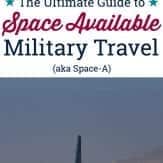
Inside: Tired of piecing together information about space-available military travel? Check out this ultimate guide to Space-A and get it all in one convenient spot!
You’ve heard about this thing called Space Available Military Travel (aka Space-A). It sounds cool, because hey, free flights, right? But it seems kind of daunting, because you have no idea what the rules are or how to get started.
Sound familiar? If you’re wondering how you can take advantage of this opportunity as a military spouse, here’s a primer to help you understand the who, what, where, and how of Space-A flying.
What is Space Available Military Travel?
Space-A travel is a privilege available to members of the community that allows us to fly free (or nearly free) on military aircraft. As Space-A passengers, we are essentially hitching a ride (or “taking a hop,” as flying Space-A is often called) on a flight that is deemed a military mission.
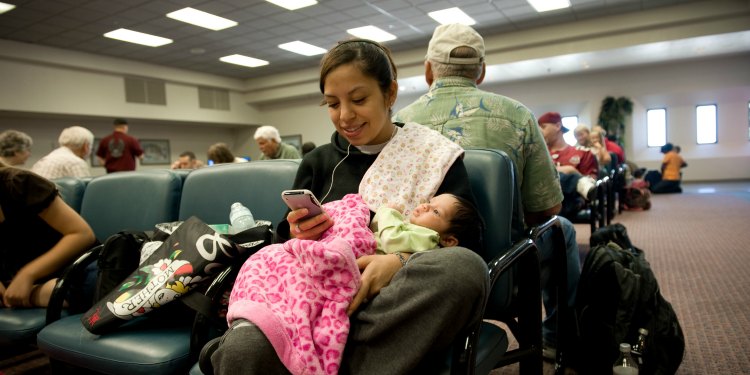
After all equipment and personnel required for the mission have been accommodated, any leftover seats may be used by Space-A passengers. Flights are entirely dependent on the mission, and the mission is the priority 100% of the time.
To put it bluntly, Space-A passengers are non-essential cargo.
Who Can Fly Space-A?
The Air Mobility Command (AMC) has a detailed summary of who is eligible to fly Space-A and under what circumstances. Space-A travelers are divided into six categories or “Cats,” based on their duty status and reason for travel. Travelers in Cat 1 are highest priority and those in Cat 6 are lowest. In other words, Space-A passengers in Cat 1 are most likely to get a seat.
I’m going to take a stab that you’re most interested in leisure travel for active duty service members and their family members, so we’re talking about travelers in the following categories:
- Active duty service members on leave traveling with or without dependents
- Spouses of active duty service members deployed for 365 or more consecutive days.
- Spouses of active duty service members deployed between 30 and 364 consecutive days
- Spouses of active duty service members stationed abroad traveling unaccompanied on Environmental and Morale Leave (EML) orders
- Unaccompanied command-sponsored spouses of service members stationed OCONUS
- Unaccompanied non-command sponsored spouses of service members stationed OCONUS
Where Can I Fly Space-A?
Depending on your category, you may be able to fly Space-A to any destination in the world to which a military mission is accepting Space-A passengers. In most cases, that means to a U.S. military base, but there are exceptions, including Patriot Express flights. There may also be a random flight to an airport or country where the U.S. does not have any military bases, but those flights are not the norm.
Before we move on, let’s clarify a few terms to make sense of this. The continental United States (CONUS) refers to the lower 48 states. Outside the continental United States (OCONUS) refers to foreign countries, Alaska, Hawaii, and other U.S. territories.
How Can I Fly Space-A Without My Sponsor?
If your sponsor is deployed (i.e. you are Cat 3 or 4), all you need is a memo from his command ( here is a sample memo ). You can travel wherever and whenever you want starting from the day your sponsor deploys throughout the duration of his deployment. Hold onto that memo, and bring it with you whenever you travel; it’s good through the whole deployment.
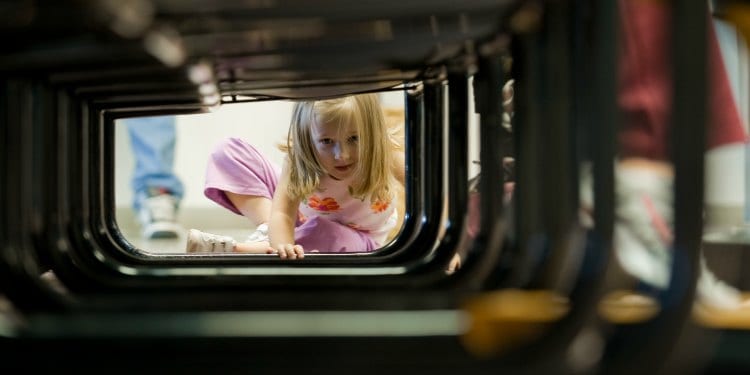
Travel for unaccompanied spouses in other situations has a few more restrictions.
If you are stationed overseas with your spouse (i.e. an accompanied tour of duty) and you are traveling as a Cat 5, you can only travel from OCONUS to OCONUS and between OCONUS and CONUS. In other words, you can’t take Space-A flights from one place in the lower 48 to another. The exception to that rule is if you are booked (a.k.a. “manifested”) on a flight to or from OCONUS that stops in another CONUS destination along the way. Here is a sample of the command-sponsored dependent memo you must obtain from your sponsor’s command. It’s good for 90 days or one round trip originating from the overseas duty station.
If you are stationed overseas in a location that allows EML, you can travel as a Cat 4 (i.e. higher priority) if you get an EML memo, but your travel will be restricted. You can only fly between you sponsor’s duty station and CONUS. You must take the most direct route possible. Here are sample EML memos from Pacific Command and Europe Command .
The final circumstance is if your sponsor is on an unaccompanied tour overseas (i.e. you are a non-command-sponsored dependent). You can obtain authorization to visit your sponsor and travel Space-A as a Cat 5, but you have the same restrictions as an unaccompanied EML traveler. Here is a sample of the non-command sponsored dependent memo you need for travel.
The travel memos for EML and non-command sponsored dependents are good for 90 days or one round trip.
Want more details on this unaccompanied dependent travel stuff? Here’s the breakdown with a few examples.
How Do I Get Started Planning a Space-A Trip?
The first thing to do is to figure out which bases near you have flights that could get you to your destination. In some cases, there are many possible paths you could take. For example, if you are on the East Coast and want to travel to Germany, you could fly from one of five or six bases that have regular missions into Ramstein Air Base.
On the other hand, not all military airfields are active Space-A hubs, so you will have to do some research to figure where you could originate your travel. If you don’t know which bases near you have Space-A flights, you can start by looking at this list of locations worldwide that may have Space-A opportunities.
After you’ve found the bases closest to you, begin studying their flight schedules, which most passenger terminals post on slides via their respective Facebook pages. You can find a list of passenger terminal Facebook pages on the AMC website .
In most cases, terminals post flight schedules a maximum of 72 hours in advance. Exceptions include certain Naval bases, which may share a week’s worth of missions, and schedules for Patriot Express flights . Terminals that have Patriot Express flights post schedules for an entire calendar month. The schedule is usually available a few days before the end of the month for the following month (for example, the April schedule will be available in the last few days of March).
What Do the Facebook Slides Tell Me?
From the slides, you can see where the flights are going, what time passengers must be there (Roll Call), and how many seats may be available for Space-A passengers.
Passenger terminals also post historical slides showing recent departures and how many Space-A passengers got seats. Reviewing the history of flights in and out of a particular base and comparing how many passengers tried to get on vs. how many got seats is useful right before you are hoping to catch a flight. It will give you an idea of whether there is a backlog of folks waiting to depart or whether most passengers have cleared out of the terminal. Here is more detailed information about how to read Space-A flight schedules on Facebook .
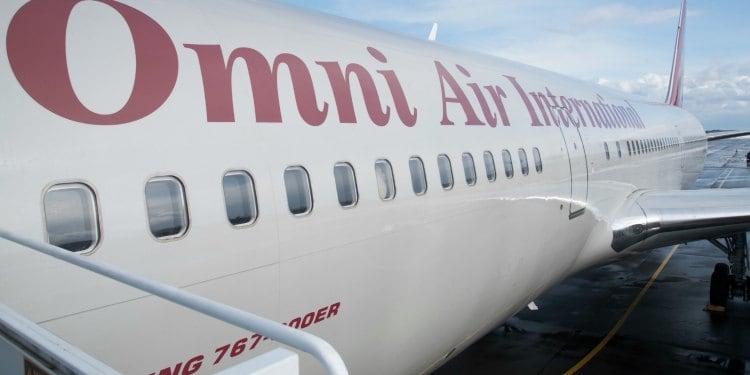
You may have to watch the schedules for several weeks or even months to get an idea of where missions fly most frequently and how likely a Space-A passenger in your category would be to get a seat.
If you’re having trouble piecing together a flight plan that could get you to your destination, you can also ask for advice in the Space-A Travelers Facebook group . To join this group, you will need to verify your military affiliation and agree to read the background information in the pinned post. Before asking a question, try searching for the topic in the discussion. With more than 62K members, there are few questions that no one has asked.
Space-A Signup
Now that you have an idea of what bases you might want to fly to and from, it’s time to sign up.
Signup refers to the process of notifying passenger terminals that you would like to fly Space-A from their location. There are several ways to sign up:
- In person at the terminal
- Via e-mail or fax
- Using the Take-a-Hop app, which has a one-time fee of $6.99.
You don’t have to use the official Space-Available Travel Request form, but this sample shows what information you need to provide. Be sure that when you specify the number of seats required, you include all members of your family, including babies. Space-A flights do not have a “lap child” policy.
When Can I Sign Up?
Priority within a category is based on signup date and time, so the earlier you sign up, the better.
Signup rules vary by circumstance.
- Active duty service members (Cat 3) can sign up starting on the first day of leave. The signup is good for the duration of the leave period.
- Spouses of deployed service members can sign up 10 days before the first day of the deployment. The signup is good for 60 days.
- Unaccompanied Spouses in other situations discussed above can sign up as soon as they have the required memo. Signups are good for 60 days.
At Which Bases Should I Sign Up?
No matter what category you’re in, you should sign up at every base you may want to depart from.
You can sign up at as many bases as you want. If you’re signing up via e-mail, you can send a single message and copy every terminal at which you want to sign up. Many terminals will not reply to confirm receipt of your signup. Be sure to bring a copy of your signup when you go to the terminal to mark yourself present for the flight.
What to Do on the Day of Your Flight
You see a flight you want to take, and you’re ready to give this Space-A thing a shot. Now what? Here’s a rundown of the actual travel process.
Marking Yourself Present
This means going to the terminal in person to let them know you are “competing” for a flight. You can mark yourself present up to 24 hours in advance of the Roll Call time, but you don’t really need to do it until an hour or two beforehand. Marking yourself present early does not give you higher priority than other passengers, but you must do it prior to the start of Roll Call.
When you mark yourself present, bring all of your travel documentation, including any required travel memos and a copy of your signup e-mail to prove the date and time of signup. Confirm that the passenger terminal has recorded the correct number of passengers traveling.
This is the time listed on the Facebook slides, and it refers to the passenger terminal staff calling the names of the passengers selected for a flight. They will start with the highest category and work their way down.
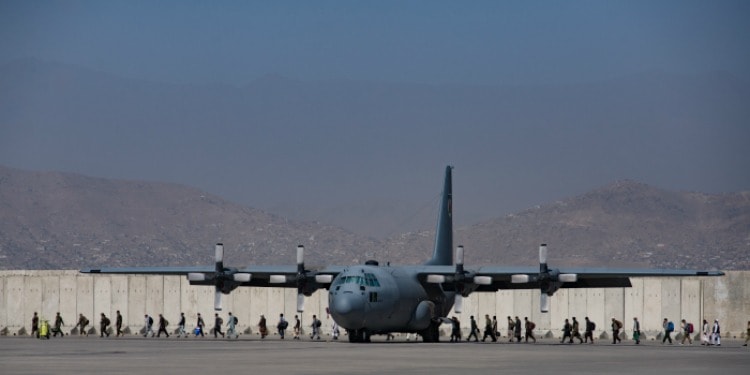
If they call your name, go to the desk with your family members’ military IDs, passports (if headed for an OCONUS destination), and appropriate travel authorization memo, and confirm that all passengers are in the terminal with bags packed.
Baggage Check/Getting Manifested
When it’s time to check bags, all travelers in your family and all of your luggage must be present. On most flights, each passenger can check two bags of up to 70 lbs each. You can also check car seats, which do not count towards your baggage allowance. On some smaller aircraft, weight limits may be as low as 30 lbs. The Air Mobility Command website has detailed information on baggage allowances.
During baggage check, you can request a meal, (if meals are available — usually a box lunch with sandwich, chips, cookie, and drink), which costs $5-$10, depending on the location. Once you’ve checked your bags and have your boarding passes, you are “manifested” on the flight. The terminal staff will tell you the estimated boarding time, but it often changes without notice, so stay in the terminal.
Once they announce boarding, all passengers go through security. Military passenger terminals follow Transportation Security Administration regulations, so you have the same restrictions for carry-on items as on civilian planes. You sit in a secure area of the terminal until the bus arrives to take you to the aircraft. You board the plane from the tarmac.
What to Expect on the Flight
Patriot Express flights are very similar to civilian flights. They have regular airplane seats and in-flight service.
For all military aircraft, two tips apply:
- Dress in layers . It can be very cold or very warm, depending on the type of aircraft, where you’re sitting, and pilot preference. I see many passengers (especially children) wearing shorts, but I don’t recommend it unless you have a pair of sweatpants handy.
- Bring hand wipes. The lavatory sinks generally don’t have running water. Instead, there is a pile of antiseptic wipes, but often not enough to last for the entire flight.
Tips for Traveling with Kids
All passengers over the age of 10 need a military ID. If you have children under 10, bring their passport or a printout from Milconnect that shows their military ID number. This second requirement was implemented in 2017, and some travelers may tell you that the passenger terminal didn’t ask for it, that a birth certificate was fine, etc. While that may be true, it’s best to cover your bases and bring the printout.
As with any travel with kids, bring plenty of activities to keep them entertained. It can be hard to predict how much time you will spend waiting in the terminal, so be prepared with movies downloaded to your tablet, cards, books, and other travel-friendly games.
You should also bring a stash of snacks. Even if you ordered a box meal, you won’t get it until you’re onboard, and you don’t want to be stuck in the terminal with hungry kiddos. The snack bars in the terminal have a way of being under construction the one time you didn’t plan ahead with snacks of your own.
Ear protection in the form of headphones – or even earmuffs – is a good idea. The flight crew will give you foam earplugs, but they may not be comfortable or suitable for young children.
Free Flights Sound Too Good to Be True. What’s the Catch?
The main challenge with Space-A travel is that it’s unpredictable. Missions can change at any moment. The pilot can decide to leave early or not to take any Space-A passengers. Or the aircraft’s destination can change after you’re already in the air.
Add these considerations to the fact that aircraft (some types more than others) often have maintenance issues that can cause a flight to be delayed by a few hours or several days. Unlike with a commercial flight, if any of these things happen, you have no recourse as a Space-A passenger. There is no such thing as being rebooked on a later flight. If you don’t get on the flight you wanted, you might not have any other Space-A options in the foreseeable future.
All these warnings are to say that Space-A is not a good choice when you have a short period of leave or when you really need to be somewhere by a certain time, whether that’s for a wedding, a holiday, a family emergency, or a work commitment back home.
Final Advice
You can increase your chances of getting a seat on a Space-A flight by traveling outside of the busiest seasons. The most difficult times to fly Space-A are during the summer PCS season and the winter holidays.
Think of Space-A travel as an adventure. Along the way, you will meet other travelers who will remind you how helpful and supportive the military community can be. You may also have the chance to fly in a military plane, which is not something most Americans get to experience, and honestly, it’s pretty cool. If you think of your journey in this way, you will be better-prepared to handle any parts of the process that don’t go as planned.
Even if you’ve read the above information three times, you might still have questions. The best thing to do is to keep reading as much as you can about flying Space-A. Join the Space-A Travelers Facebook group and follow the discussions. I guarantee that many of the questions asked by other group members will apply to you, and after a while, you will find that you know the answers!
Keep following the Facebook slides to get a feel for where flights are going and how many Space-A travelers are getting seats. You may start to see patterns, either weekly or seasonally.
Finally, before you plan a major family vacation using Space-A, consider doing a dry run. Try a short trip within CONUS to help you learn the process. That way, you will know the ropes and feel more comfortable planning a bigger adventure.
Want more on military life?
- 9 Hidden Ways to Save Money at the Commissary and PX
- 10 Things a Military Spouse Should Have in her Car at All Times
- Military Base Gate Etiquette: 10 Small Ways to Avoid a Giant SNAFU
- 7 Myths About Tricare for Military Families…Debunked
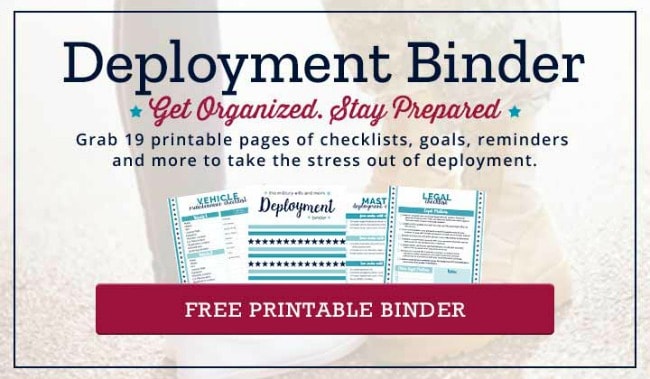
About Stephanie Montague
Stephanie Montague is the founder of Poppin’ Smoke (www.poppinsmoke.com), a website designed to help members of the military community use their military benefits to travel. Stephanie and her husband have been traveling the world since he retired from the Army in 2015. Through Poppin’ Smoke, Stephanie shares everything she and her husband learn about traveling Space-A, using military benefits and facilities while abroad, and getting the most out of travel experiences.
Reader Interactions
I’m interested in traveling. Where and who do I email?
All military Space-Available Facebook Pages have contact information. The email, and telephone numbers are listed.
The DOD, Congress and the Veterans Affairs Committee should amend the bill to allow full worldwide travel eligibility for 100% Disabled Veterans on military space available flights to all destinations.
Amendment which would allow for full privilege of travel worldwide would be of no additional cost to the DOD. I do believe the USA government should grant the full privilege of worldwide travel on Space A flights to this small group of Veterans.
The sacrifices the men and women have made should never go unnoticed. The men and women who served our country, and returned home injured, have already paid a big price on our behalf. If there is any space available for travel on a military aircraft to worldwide locations, there is no logical reason whatsoever why our 100 percent disabled military veterans should not be eligible to be on those flights.
How do you get off base once you arrive at your destination?
Leave a Comment Cancel reply
Your email address will not be published. Required fields are marked *
More Popular Posts
Here’s what military families are saying about Military Wife and Mom…
Sarah rohrer.

I already found useful tips to help my spouse. I feel connected even though Navy life keeps us from spending time together before deployment arrives. Great course!”
Melinda Walker

The encouragement and the helpful reminders are invaluable.
Carlee Marlow

I’m more confident. I now have tools in my belt to work through things, instead of feeling helpless. I loved the videos…hearing Lauren’s side of it and her personal experience using the tools she gave us. THANK YOU! Lauren, you have put my mind at ease to know that there are tools out there and ways to get through this!
Mountain View, CA
Mountain View
Around the Globe
Hurricane tracker.
Severe Weather
Radar & Maps
News & features, winter center, news / astronomy, ‘cabs to get into space’: how this indian startup wants to revolutionize satellite space travel.
India is pushing pioneering national initiatives, including plans to have its own space station by 2035 and to put an Indian astronaut on the moon by 2040.
By Amy Gunia, CNN
Published Apr 26, 2024 4:20 AM PDT | Updated Apr 26, 2024 4:20 AM PDT

Prime Minister Narendra Modi speaks at the launch of space infrastructure projects at Vikram Sarabhai Space Centre (VSSC), in Thiruvananthapuram, India on February 27. (Photo credit: ANI/Reuters via CNN Newsource)
(CNN) — India is one of the world’s top spacefaring nations. It is the first Asian country to reach Mars orbit, and the fourth on the planet to take a spacecraft to the moon, landing closer to the south pole, known for its cratered terrain, than anyone else had at the time.
But its private sector has played a limited role in space exploration, acting mostly as suppliers and vendors for its national space agency, the Indian Space Research Organization (ISRO).
That’s changing quickly, owing to a raft of government reforms aiming to boost private participation in the space sector. In the United States, the proliferation of private companies like Elon Musk’s SpaceX have boosted Washington’s space ambitions by driving down costs.
Now Indian homegrown startups like Skyroot Aerospace, which launched the country’s first private rocket in 2022, are leading the charge to commercialize India’s space sector and bolster its status as a space superpower.
Inside a sleek rocket hanger in the southern city of Hyderabad, the company is preparing for lift-off of the seven-story tall Vikram-1 rocket, which will take India’s first privately launched satellites into orbit.
“That’ll be a major milestone for us,” Pawan Chandana, a former ISRO scientist who co-founded Skyroot Aerospace in 2018, told CNN. “Very few companies globally are able to make it to orbit yet.”
India is pushing pioneering national initiatives, including plans to have its own space station by 2035 and to put an Indian astronaut on the moon by 2040.
Meanwhile, Prime Minister Narendra Modi, who is currently running for his third consecutive term, has made a major push to commercialize space activity in recent years, including allowing private enterprise to take part and easing approvals for foreign investment into the space sector.
Small satellites, big opportunity
Companies around the world are catapulting thousands of satellites into low Earth orbit (LEO), which extends to an altitude of about 2,000 kilometers (1,200 miles), to form mega-constellations: groups of small satellites that work together to beam broadband Internet to terrestrial users.
According to analytics firm BryceTech, 96% of spacecraft launched in 2022 were small satellites, up from 61% in 2013.
That’s driving exponential growth. The global space economy was worth $630 billion in 2023, according to a report by McKinsey & Company and the World Economic Forum, and it could grow to $1.8 trillion by 2035.
It’s the small satellite market that Skyroot wants to capture, with plans to offer customized launches for satellites under 500 kilograms (1,100 pounds).
Organizations’ satellites often piggyback onto “rideshare” missions. Last year, for example, one SpaceX journey — powered by its Falcon 9 rocket, which can carry 22,000 kilograms (48,500 pounds) into LEO — launched 51 small satellites into orbit for multiple companies.
But there’s often a waiting period to hitch a ride, and satellites can only go where the rocket is heading. That may be disadvantageous for a satellite that wants to reach a particular orbit, to observe a certain part of the planet.
The model does provides advantages. SpaceX says the cost of getting a 500-kilogram (1,100 pound) payload into LEO is about $6,000 per kilogram.
“It’s really very, very competitive what SpaceX is now offering,” says Susmita Mohanty, director general of Indian think-tank Spaceport Sarabhai.
Skyroot wants to offer dedicated launches for $20,000 per kilogram, which is much more expensive than SpaceX’s less bespoke service. (Chandana says that mass production and better technology may enable further cost reductions).
Chandana compares SpaceX’s ridesharing missions as “a train to go to space” and Skyroot’s operations as “cabs to get into space, where we take satellites to their customized locations.”
He adds: “We don’t directly compete with SpaceX, because SpaceX is into bigger vehicles and satellites … and what we are into is customized launch solutions.”
Once prices drop, there will be more interest in “people wanting to choose dedicated launches without compromising on going for a rideshare mission,” he said.
Customized launches might be useful for those who want to send smaller payloads aiming to reach “a diverse amount of orbits” that might not be possible to get to by ridesharing, says Kari Bingen , director of the Aerospace Security Project at the Center for Strategic and International Studies, a think-tank based in the US.
That could be useful for commercial companies, academic institutions or governments that are willing to pay the price, she adds.
Chandana is optimistic he can make it more affordable, noting the “frugality in the DNA” of India’s space program. (The country’s Mars orbiter budget was just $74 million. Modi has pointed out that it cost less than the Hollywood sci-fi thriller “Gravity.”)
Chandana adds that the company aims to build a reusable rocket eventually, a capability which has helped SpaceX reduce launch costs.
Hurdles to clear
India is now home to almost 200 space startups, up from just one in 2014, according to a report published by Deloitte in 2023. Over the same period, private investment into those companies topped $200 million.
Skyroot has already raised $95 million, with backers like Singapore sovereign wealth fundâ¯GIC. That makes it India’s most-funded space startup, according to data platform Tracxn .
But the company has work to do to reach profitability. It needs to demonstrate that it can consistently reach orbit, before interest “will turn into contracts, which will help us scale,” says Chandana. Yet spots on Vikram-1 are fully booked, with a mix of domestic and international clients.
As Indian space startups mature over the coming years, he expects the government to become a customer, enabling further growth. Many private space companies source income from governments, including Space X, which has raked in billions of dollars from US government contracts.
India’s government allocated just under $1.6 billion to develop its space prorgram in its interim 2024 budget . By comparison, NASA received $24.9 billion for 2024.
“Unless and until the government backs up the reforms with significant funding coming from India itself, it will be difficult for us to rival the development of the US market or the Chinese market,” says Mohanty.
She adds that for Indian startups to play a meaningful role in the global marketplace, “they need to go beyond servicing our own space agency’s domestic mandate and start bidding for contracts.”
Chandana sounds up for the challenge. “We want to become globally [one of the] top three launch companies,” he says. “My fascination for rockets has become an obsession.”
Read more about space exploration:

The-CNN-Wire™ & © 2024 Cable News Network, Inc., a Warner Bros. Discovery Company. All rights reserved.
Weather News

LIVE: Catastrophic destruction in wake of several tornadoes in Midwest

How to recognize a 'radar-confirmed tornado'
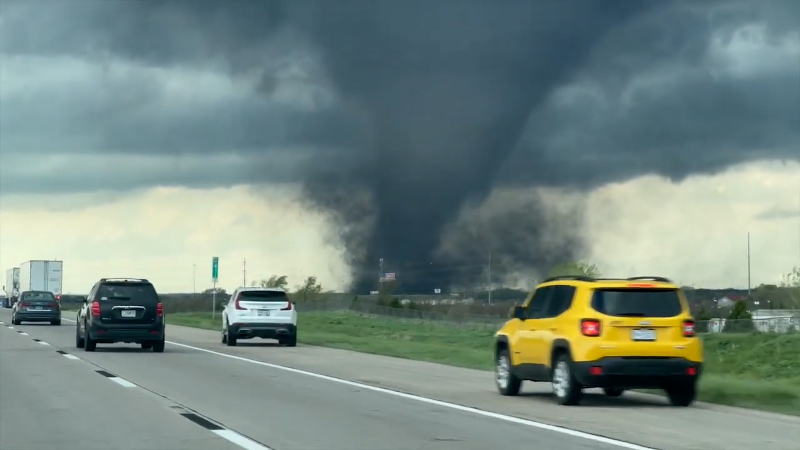
'That's a strong tornado:' Tornado rips across I-80 in Nebraska
Top Stories
Trending Today
Accuweather early, accuweather prime, forecast victories.
LATEST ENTRY
VIDEO: Stunning destruction in Elkhorn, Nebraska shows power of tornado
52 minutes ago

Central states preparing for another round of volatile thunderstorms
26 minutes ago

This map may save lives when there's a tornado threat

Weather Forecasts
Spring fever: Northeast cities chasing 90-degree highs

First-ever photograph of a tornado from 140 years ago likely a fake
23 hours ago

Featured Stories
10 types of tornadoes that occur in the US

Overrun Japanese town erects barrier to block photos of Mount Fuji

Indian voters battle extreme temperatures amid intense heat wave

A lake in Mexico’s ‘magical town’ is disappearing

More than 100 prisoners flee after rainfall destroys prison in Nigeria

We have updated our Privacy Policy and Cookie Policy .
Get AccuWeather alerts as they happen with our browser notifications.
Notifications Enabled
Thanks! We’ll keep you informed.

Astronauts arrive in T-38 Talon jet planes to prepare for NASA's first crewed Starliner launch: See the best pictures
Posted: April 27, 2024 | Last updated: April 27, 2024
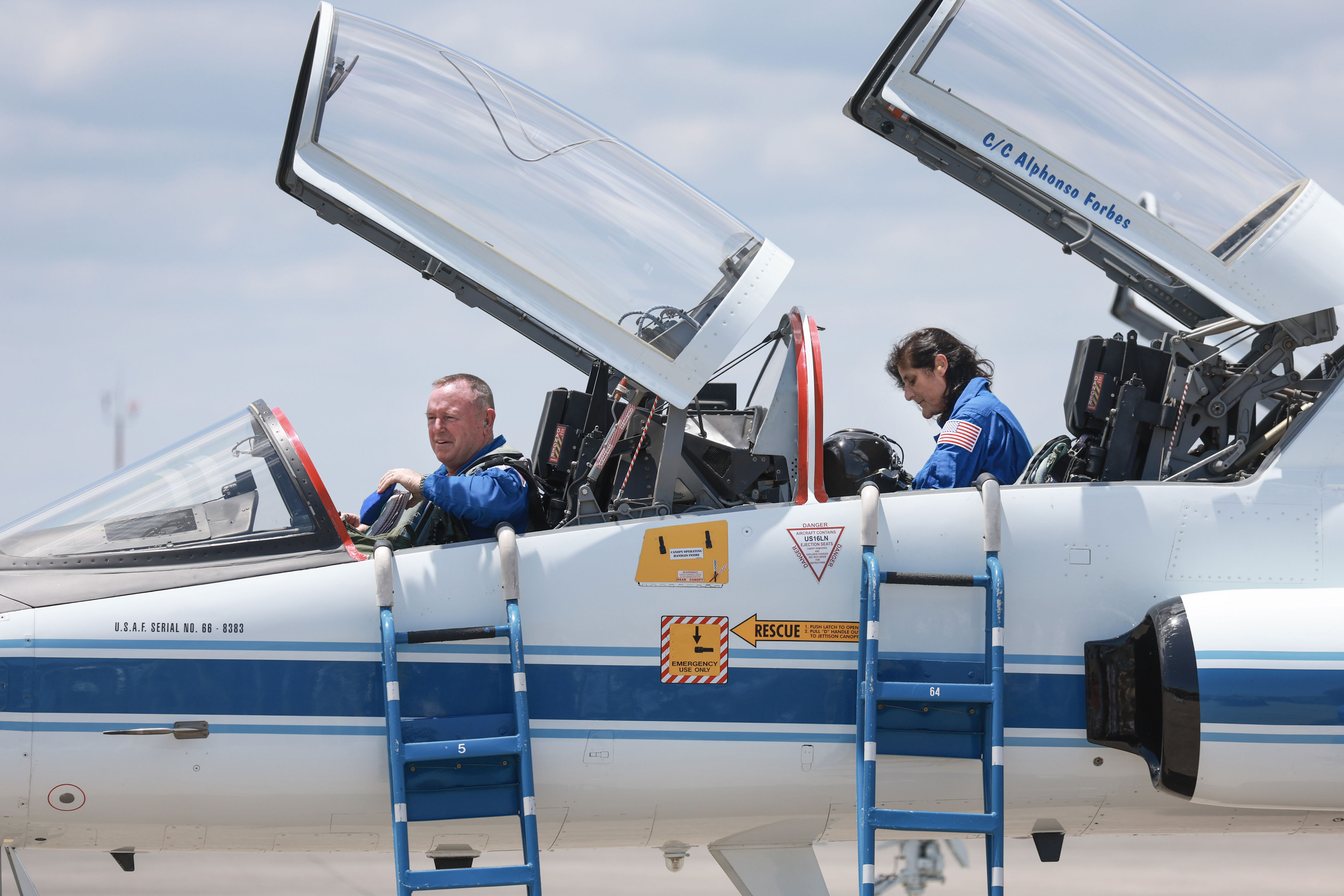
Two veteran NASA astronauts are preparing for a thrilling new first in space travel.
In the coming days, the much-delayed Boeing Starliner spacecraft will launch with humans on board for the first time: Commander Butch Wilmore and Pilot Suni Williams. The capsule will travel to the International Space Station atop an Atlas V rocket that's set to blast off from Cape Canaveral Space Force Station's Space Launch Complex 41 on May 6.
Join us as we look at the best photos of the astronauts arriving to prepare for thie history-making launch, and see what the new Starliner capsule looks like...
NASA's Boeing Crew Flight Test Commander Butch Wilmore and Pilot Suni Williams arrived at the Kennedy Space Center in Cape Canaveral, Florida, in a T-38 jet on April 25, 2024. They flew in for a mission aboard the Boeing Starliner that will take them to the International Space Station. That launch is set to depart from the Cape Canaveral Space Force Station on May 6, 2024.
Keep reading to see more great photos...
MORE: Follow Wonderwall on MSN for more fun celebrity & entertainment photo galleries and content
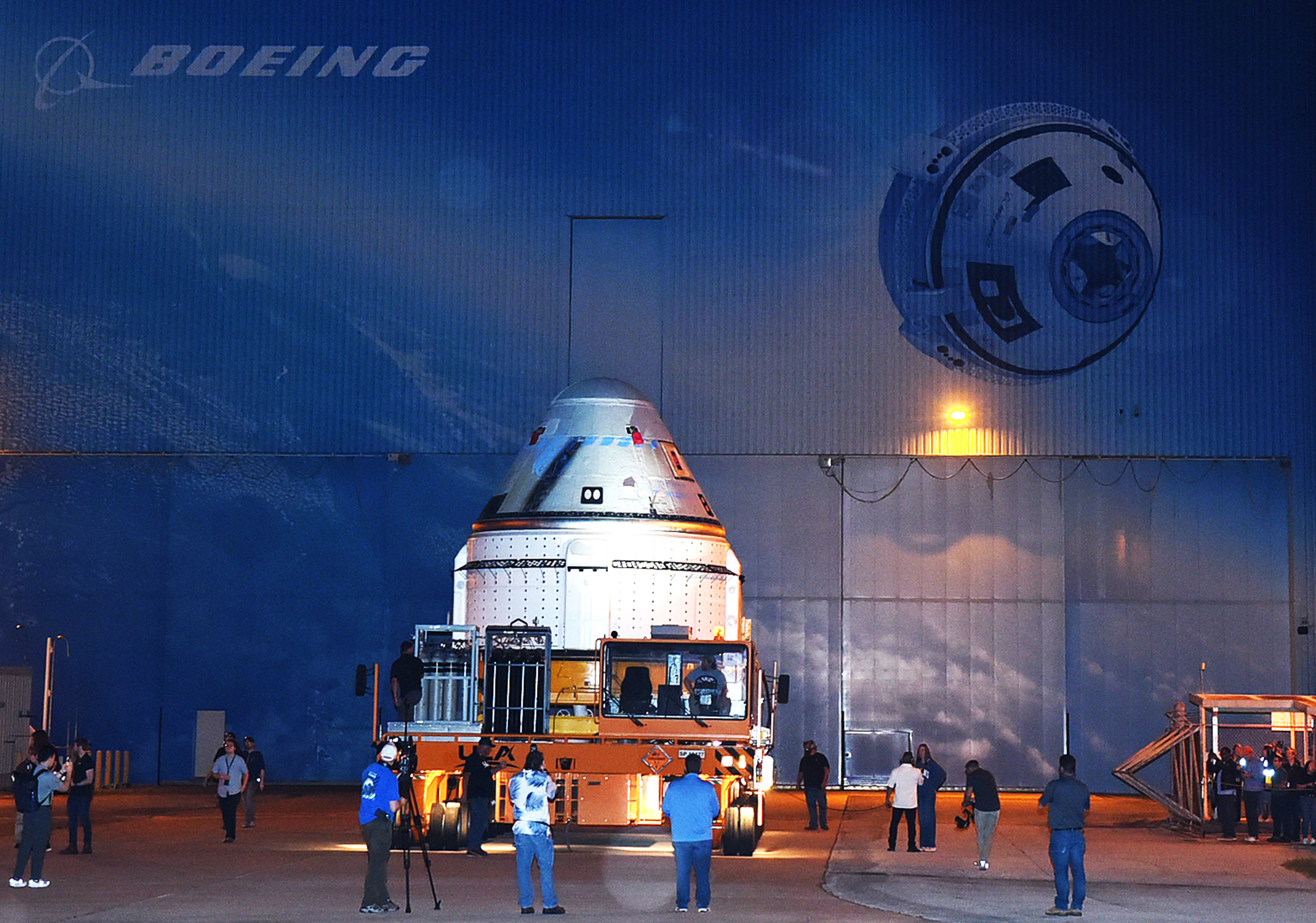
Boeing's CST-100 Starliner spacecraft rolls out of the Commercial Crew and Cargo Processing Facility at the Kennedy Space Center to be transported to pad 41 at Cape Canaveral Space Force Station in Cape Canaveral, Florida, on April 16, 2024.
Starliner is scheduled for its first crewed launch to the International Space Station on a ULA Atlas V rocket with NASA astronauts Suni Williams and Butch Wilmore on May 6, 2024.
MORE: NASA unveils new supersonic aircraft: All the best pictures

NASA's Boeing Crew Flight Test Commander Butch Wilmore and Pilot Suni Williams prepared to address the media after arriving at the Kennedy Space Center in Cape Canaveral, Florida, in a T-38 jet on April 25, 2024.
They flew in for a mission aboard the Boeing Starliner that will take them to the International Space Station.
That launch is set to depart from the Cape Canaveral Space Force Station on May 6, 2024.
MORE: SpaceX Falcon 9 rocket cargo arrives at International Space Station: All the best launch pictures
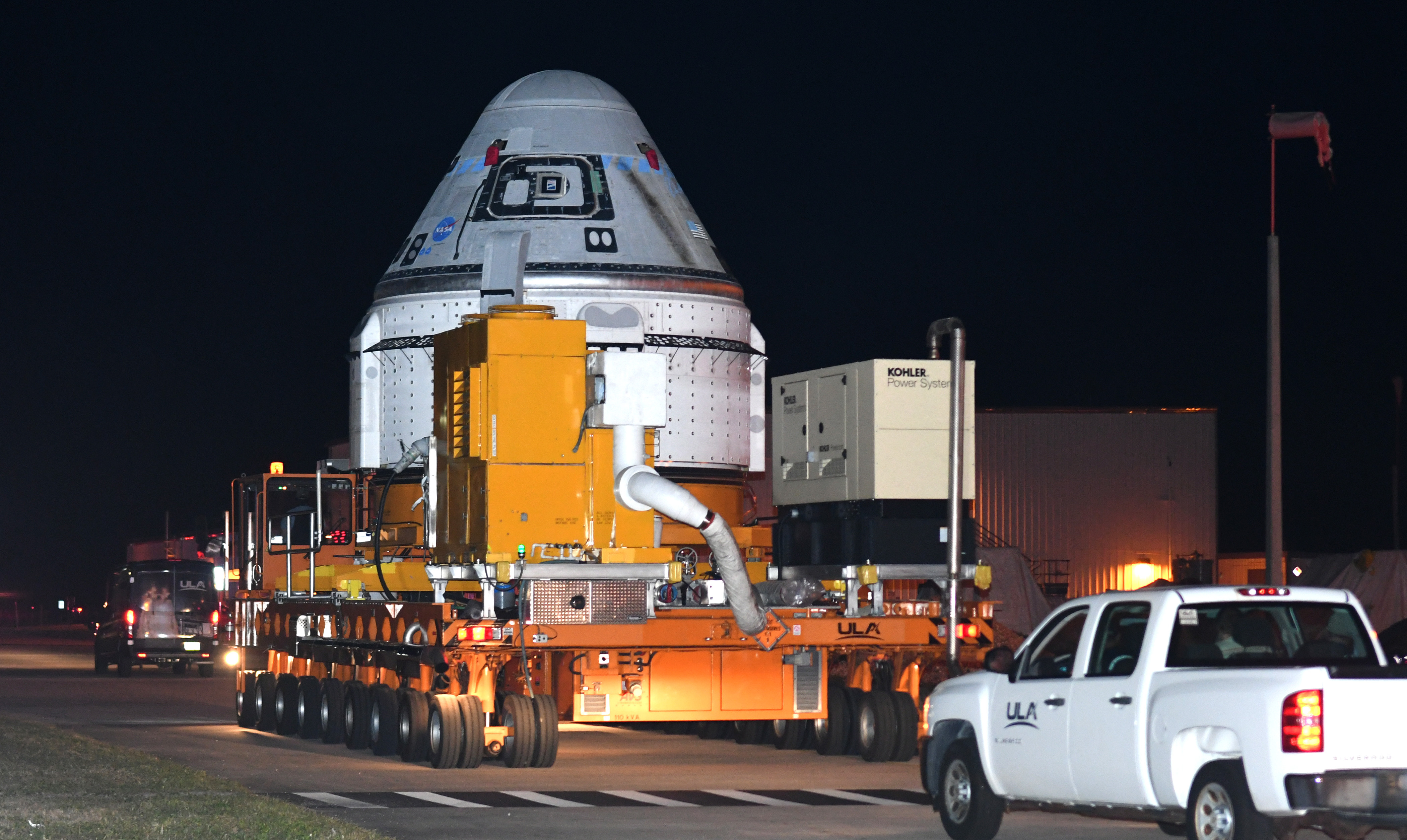
Boeing's CST-100 Starliner spacecraft was rolled out of the Commercial Crew and Cargo Processing Facility at the Kennedy Space Center to be transported to pad 41 at Cape Canaveral Space Force Station in Cape Canaveral, Florida, on April 16, 2024.
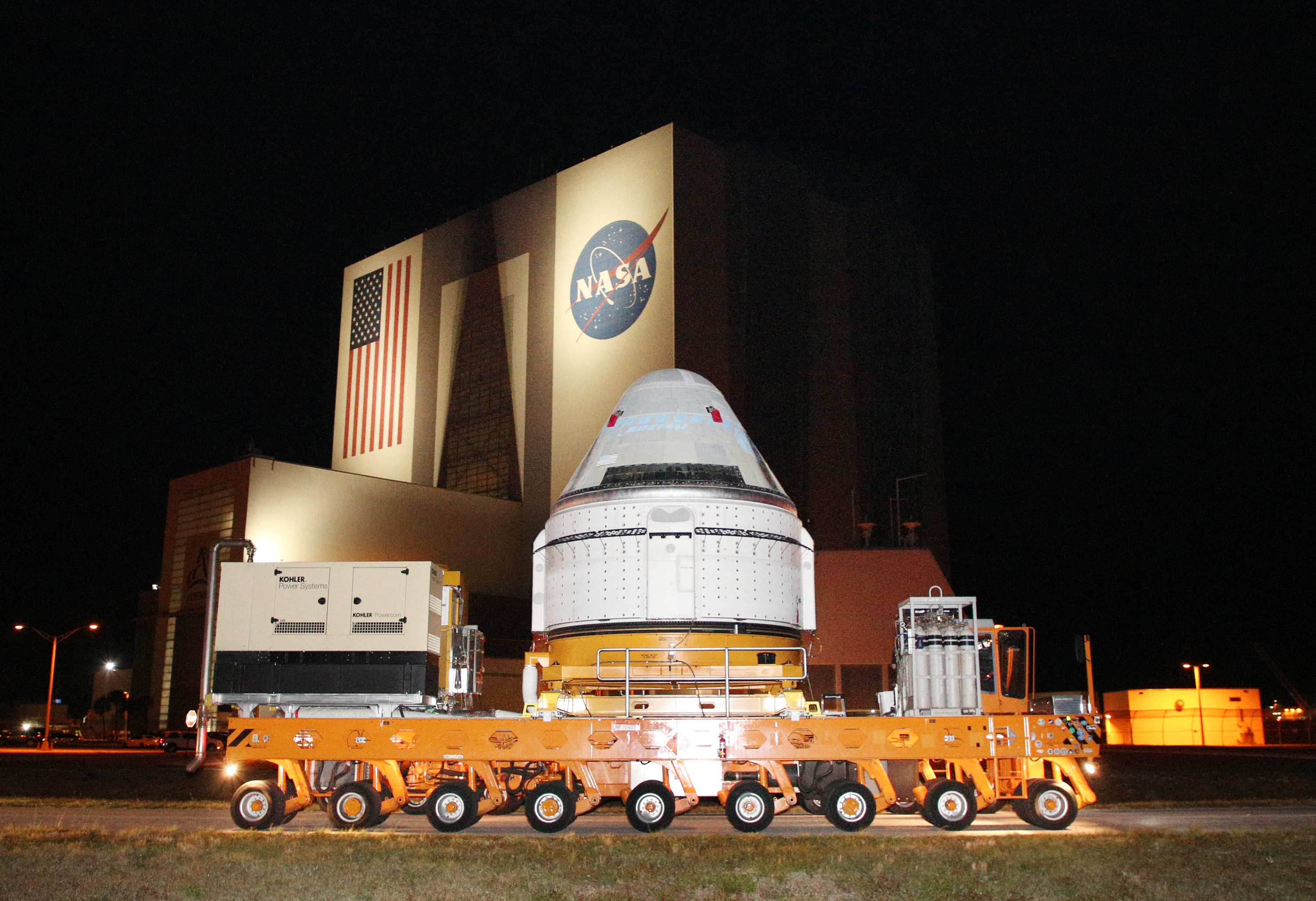
A Boeing CST-100 Starliner spacecraft was rolled out from Boeing's Commercial Cargo and Processing Facility in the pre-dawn hours of April 16, 2024, past the Vehicle Assembly Building at the Kennedy Space Center in Cape Canaveral, Florida.
NASA is targeting a May 2024 launch for the Crew Flight Test-1 (CFT-1) mission to the International Space Station with astronauts Barry Wilmore and Sunita Williams.
A United Launch Alliance (ULA) Atlas 5 rocket will ferry the Boeing capsule on its historic first flight of the new, crewed spacecraft.
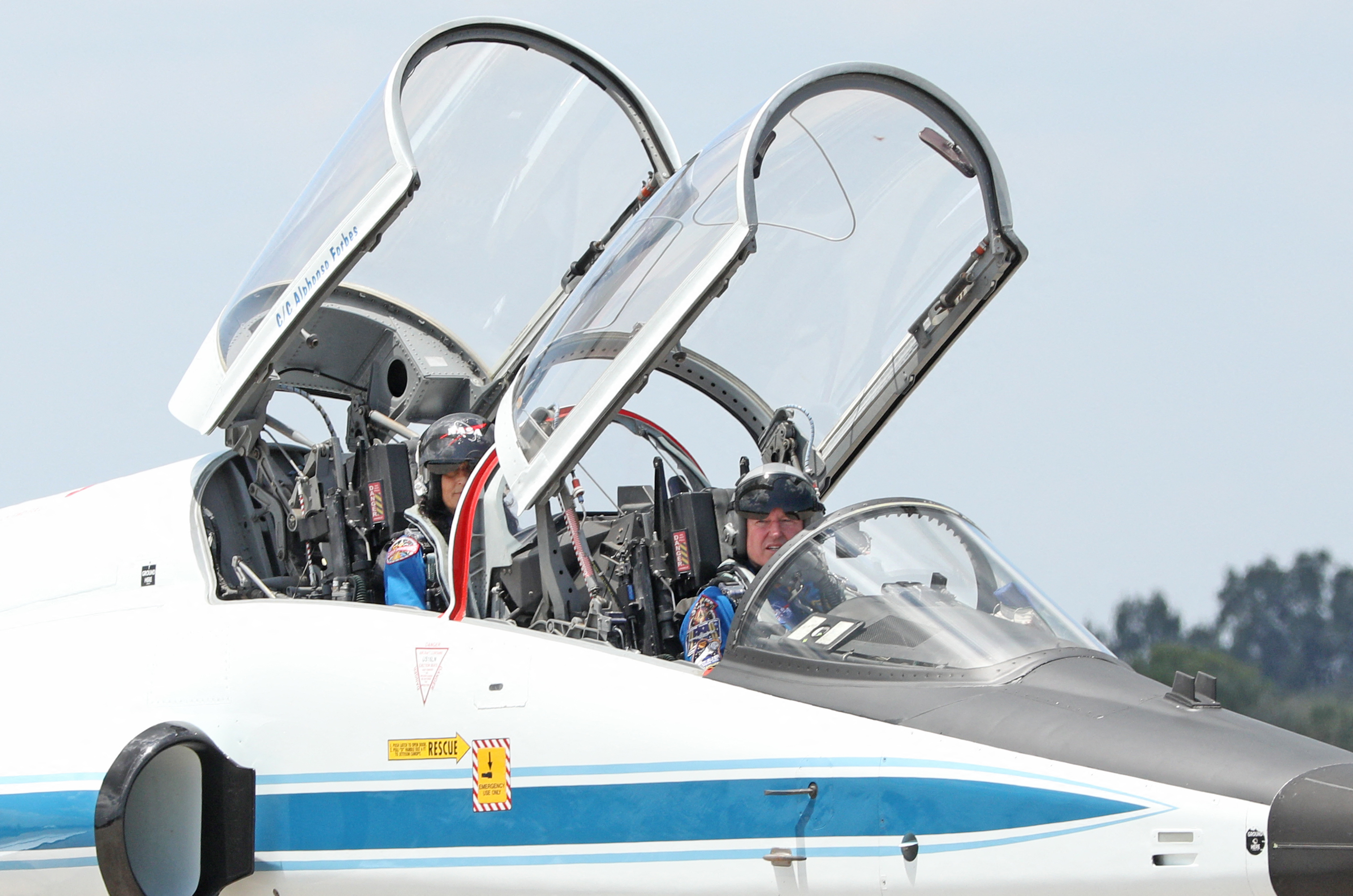
NASA astronauts Suni Williams and Butch Wilmore arrived at the Kennedy Space Center in Cape Canaveral, Florida, on April 25, 2024, aboard a T-38 Talon jet for their next mission: A United Launch Alliance (ULA) Atlas V rocket will ferry them in a Boeing CST-100 Starliner capsule on its historic first crewed flight of the new spacecraft on May 6.
Williams and Wilmore will also be the first humans launched into space aboard an Atlas V rocket.

NASA's Boeing Crew Flight Test Commander Butch Wilmore and Pilot Suni Williams posed to a photo while greeting the media following their arrival at the Kennedy Space Center in Cape Canaveral, Florida, in a T-38 jet on April 25, 2024.

NASA's Boeing Crew Flight Test Commander Butch Wilmore and Pilot Suni Williams arrived at the Kennedy Space Center in Cape Canaveral, Florida, in a T-38 jet on April 25, 2024.
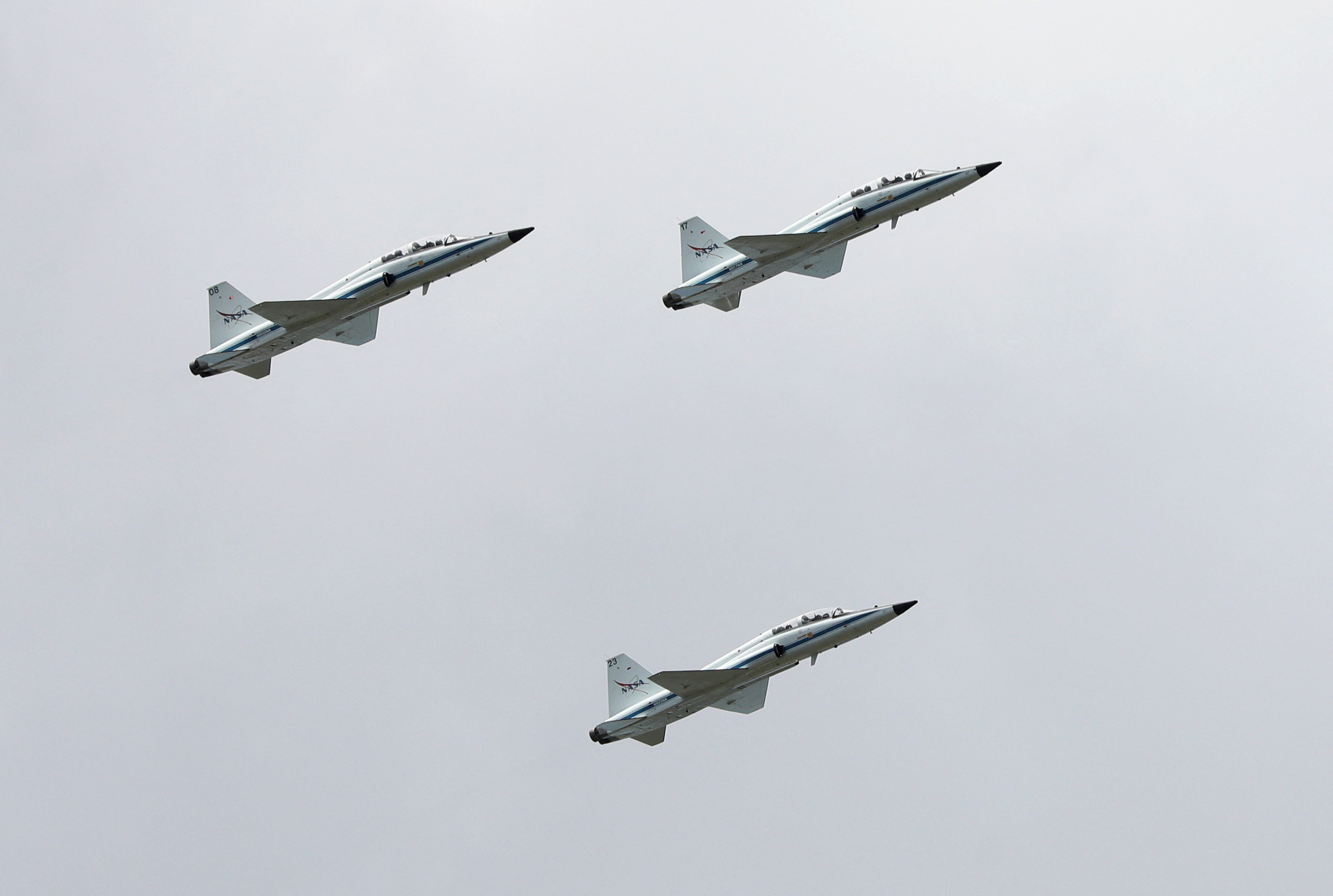
NASA astronauts Suni Williams and Butch Wilmore flew in the lead jet -- a T-38 Talon -- and landed at the Kennedy Space Center in Cape Canaveral, Florida, on April 25, 2024, ahead of their next mission: A United Launch Alliance (ULA) Atlas V rocket will ferry the Boeing CST-100 Starliner capsule on its historic first crewed flight of the new spacecraft on May 6.
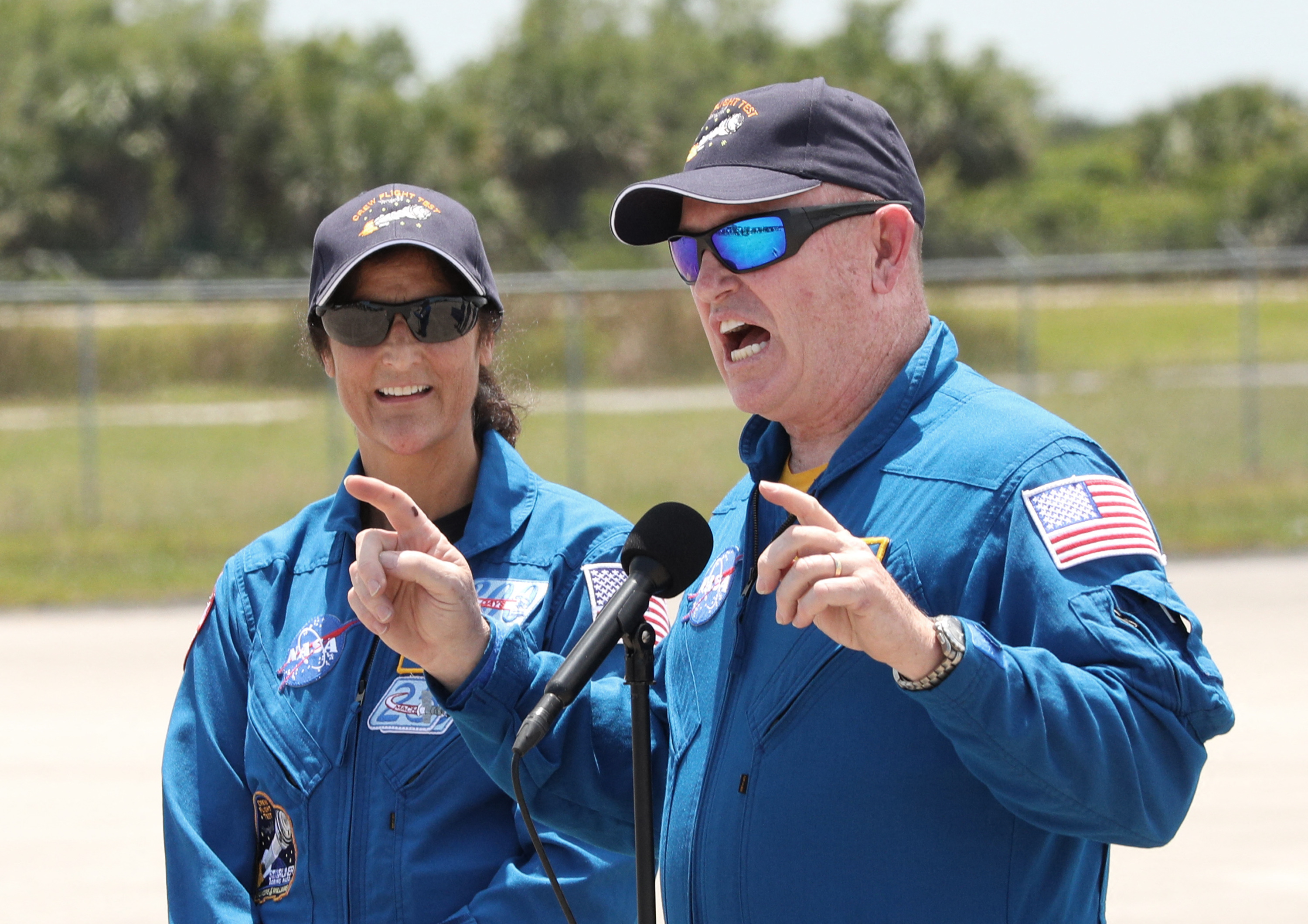
NASA astronauts Butch Wilmore and Suni Williams spoke to the media at the Kennedy Space Center in Cape Canaveral, Florida, on April 25, 2024, after arriving via T-38 jets.
The pair will fly on the Crew Flight Test-1 (CFT-1) mission to the International Space Station, set for May 6, 2024.
A United Launch Alliance (ULA) Atlas V rocket will ferry the Boeing CST-100 Starliner capsule on its historic first crewed flight of the new spacecraft.
Wilmore and Williams will also be the first humans launched into space aboard an Atlas V rocket.
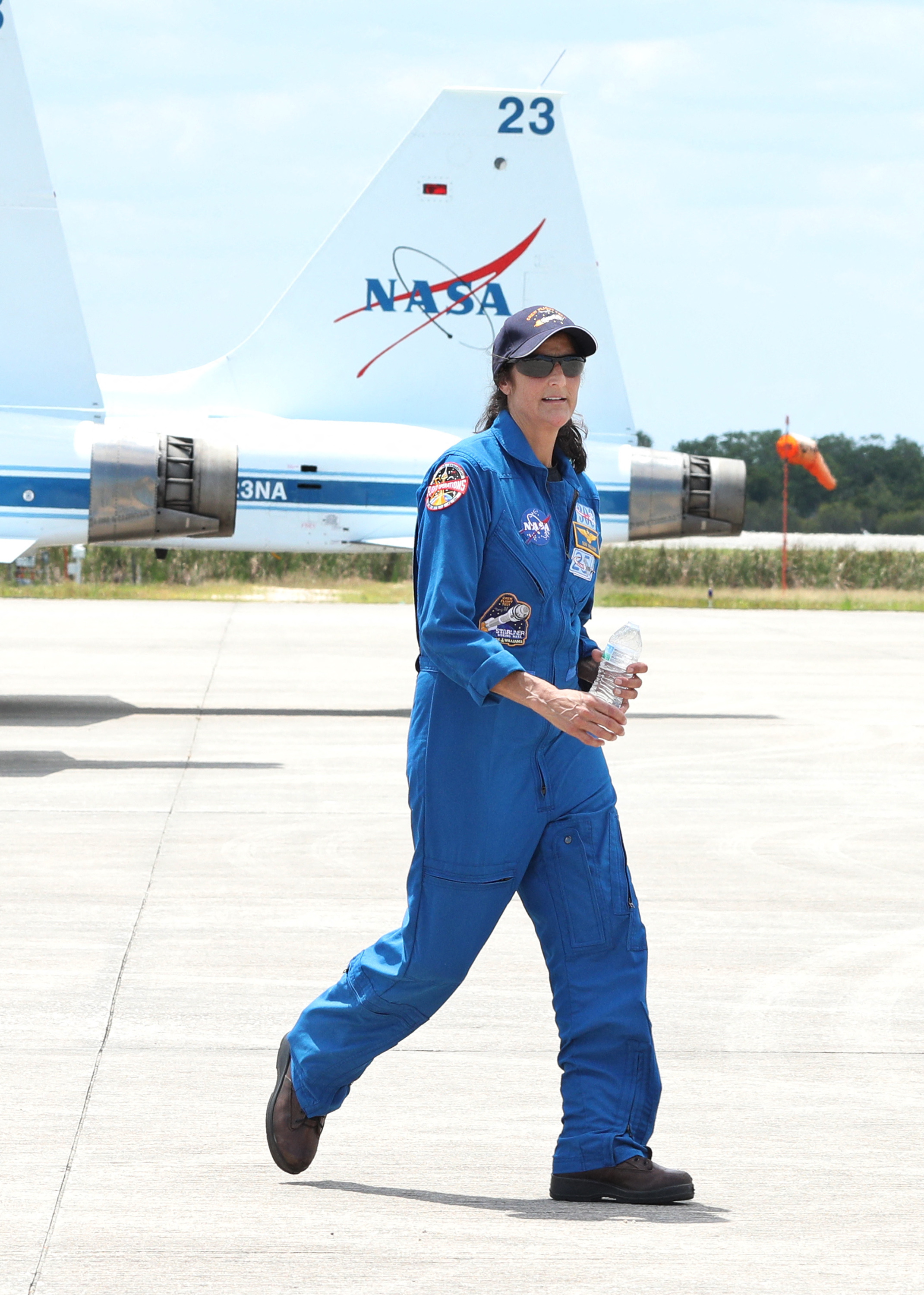
NASA astronaut Suni Williams flew herself in a T-38 Talon jet to the Kennedy Space Center in Cape Canaveral, Florida, on April 25, 2024.
She's there to next fly on the Crew Flight Test-1 (CFT-1) mission to the International Space Station, set for May 6.
Williams will also be one of the first humans launched into space aboard an Atlas V rocket.
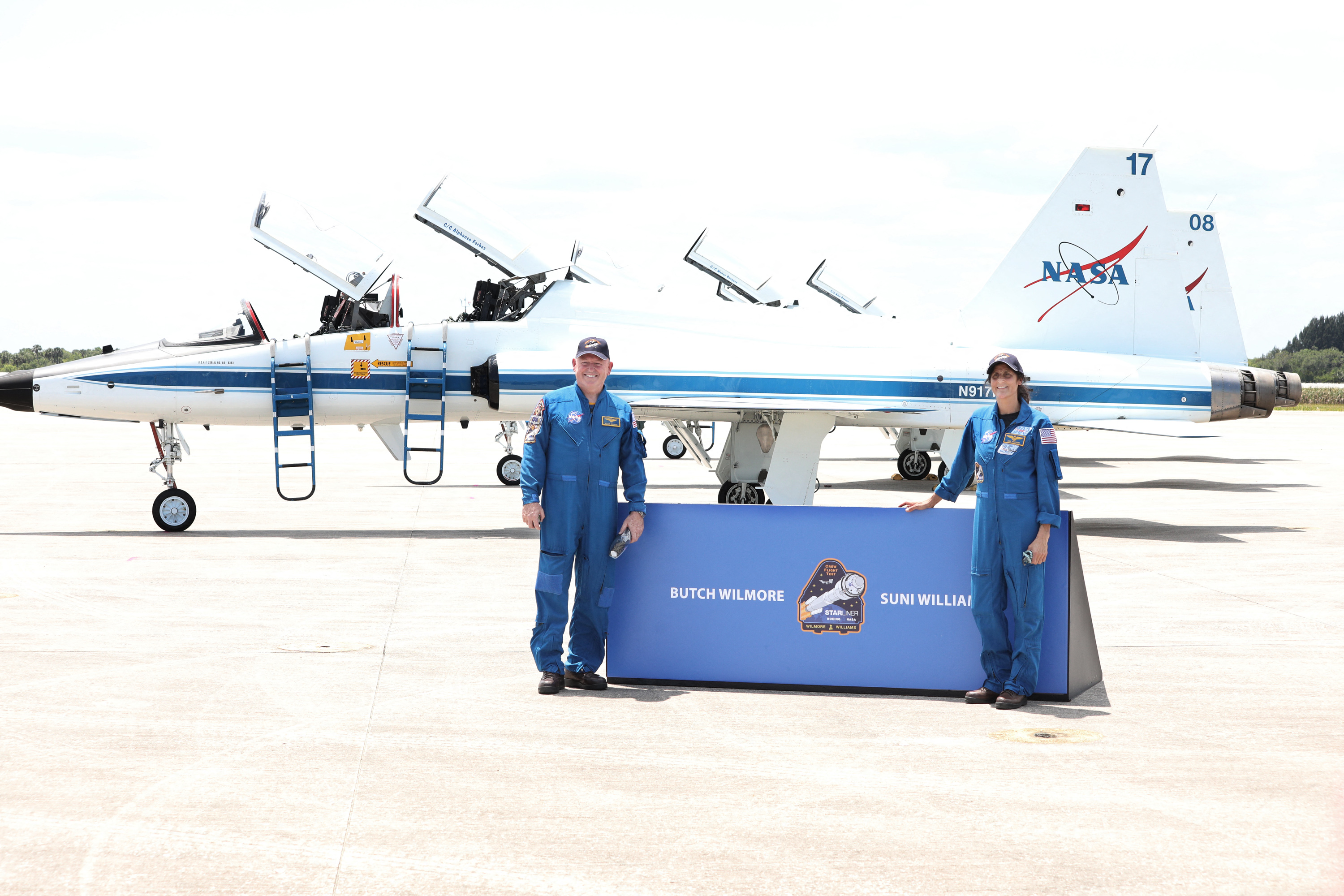
NASA astronaut Suni Williams arrived at the Kennedy Space Center in Cape Canaveral, Florida, on April 25, 2024, in a T-38 Talon jet she piloted.
She's there for a mission aboard a Boeing Starliner that's headed to the International Space Station and set to launch on May 6, 2024.
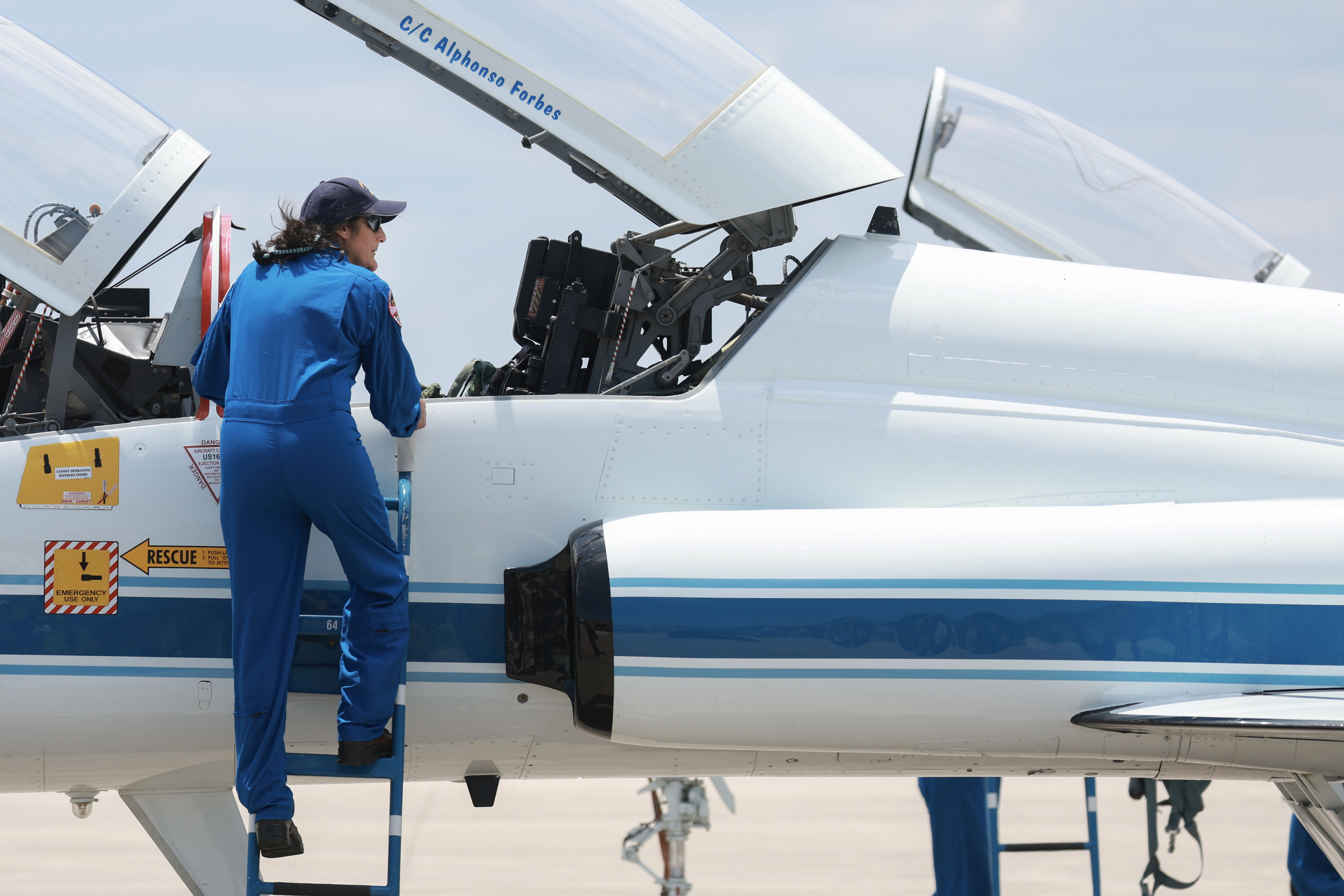
The Boeing CST-100 Starliner capsule launched atop a rocket at dusk from the United Launch Alliance complex 41 at Cape Canaveral Space Force Station in Florida on May 19, 2022. This mission was unmanned.
More for You
29 common human foods you may not realize are poisonous to your dog
NY vs. Trump: Cross examination of DA Bragg's first witness unravels important truths
We Ordered 7 Fast-Food Breakfast Sandwiches to Find the Best One
Here is the true value of having a fully paid-off home in America — especially when you're heading into retirement
The Longest Living People In the World All Abide by the ‘Power 9’ Rule
The Worst Cut Of Beef For Pot Roast (And What To Use Instead)
The 50 best conservative places to live in America today, according to data
Is your sleep interrupted by leg cramps? Here are some of the most surprising causes
Barber Coins Are Worth Thousands: Here’s How To Spot Them in Your Spare Change
Mark Jackson says he'd cancel Lakers-Nuggets Game 4 if he were Adam Silver: "Throw in the towel"
A Tesla executive sold $181.5 million worth of stock shortly after quitting
17 10-Minute High-Protein Lunches for Weight Loss
The 50 best liberal places to live in the US, based on data
This is the ideal sleep temperature for older adults, new study finds
Tornado outbreak predicted from Texas to Missouri on Saturday
4 Things You Should Never Cook in Cast Iron
Struggling retail chain shares Chapter 11 bankruptcy fate
5 Things the Average Retiree Won’t Be Able to Afford in the Next 5 Years
The health condition many women are getting diagnosed with after COVID
KTM GT-XR is STREET LEGAL MADNESS / 100-200 AUTOBAHN & SOUND
- Search Please fill out this field.
- Manage Your Subscription
- Give a Gift Subscription
- Sweepstakes
- Travel Products
- Travel Accessories
I'm a Notorious Overpacker, but These 12 Space-saving Hacks Help Me Fit Everything in a Carry-on
These travel organizers changed the way I pack — and they start at $9.
If you click on links we provide, we may receive compensation.
Travel + Leisure / Tyler Roeland
Life is full of challenges that call for us to rise to the occasion, but for me there’s nothing quite like that “ Can I fit all of this in a carry-on bag ? ” conundrum to really get my problem solving skills going. Over the years, I’ve managed to pack a large amount of items into a carry-on bag, and it’s a badge of honor I wear proudly.
To be fair, achieving this is much easier when packing for warmer climates that call for less bulky clothing, but there are still ways to bring along your favorite cardigan and snow boots. On a recent ski trip to Vail, Colorado, for example, I wore my trusty snow boots and ski jacket on the plane instead of packing them to free up space in my luggage. Next up, I’m currently packing for a two-week trip through Italy, finally fulfilling my bucket list dream to visit T+L reader favorite The St. Regis Venice , have a whirlwind culinary adventure through Emilia Romagna in Modena and Bologna’s Leading Hotels of the World Grand Hotel Majestic già Baglioni , and end it all with a grand finale at IHG’s Grand Hotel Des Arts in Verona and R Collection’s Grand Hotel Victoria on Lake Como. And yes, I’ll have a carry on through it all. Naturally, hotels with the word grand in them, require fab outfits to match the mood. This is where good packing cubes can make magic happen, and I’m proud to share that I’ve already fit at least eight of my favorite dresses into one cube for my Italian jaunt.
Are you team fold or roll? Do you tuck your socks into shoes and sit on your suitcase, praying that the zipper will be merciful? If so, it may be time to consider a different approach. With effective products (and a strong will), you too can forget the stress of checking a bag and wondering if it will arrive in time. From space-saving packing cubes to a compression garment bag , these are some of the products I rely on to remain #TeamCarryOn.
Packing Cubes
One of my biggest travel regrets is that I didn’t give into packing cubes sooner. The hours spent debating whether to fold or roll, leave a favorite item behind, or simply be able to close my luggage due to space has cost me hours of time. For me, these Calpak 5-piece Packing Cube Set packing cubes have truly delivered the solution with a set of four packing cubes and a water-resistant pouch for storage. The top portion is a breathable mesh that makes it easy to identify what you’ve packed without having to open anything to sort through it, and you can even label each cube based on attire. Alternatively, this Bagail 8-piece Packing Cube Set over at Amazon has even more cubes at just a fraction of the cost. It has more than 22,000 five-star ratings and includes a laundry pouch and shoe bag. If you’re traveling with little ones, State Bags makes kid-friendly packing cubes with handles .
Hanging Toiletry Bag
This squishable, waterproof Calpak Toiletry Bag has a durable, lightweight polyester material that makes it easy to lay items on top of while packing. At the same time, it’s still large enough to store makeup products, with a few pockets to stash those random beauty and toiletry items that you may be scrambling to find a spot for in the final hour of packing. As a bonus, it comes in a range of bright colors like bubblegum that are just plain fun and an instant mood booster. Amazon offers a durable alternative with this Nishel Toiletry Bag for $19. Transparent pockets and a soft exterior that allows it to lie flat are just a few of its perks.

Roll Packing Organizer
The Osprey Ultralight Roll Packing Organizer , another hanging kit, is a helpful accessory if you’re looking to keep anything from your toiletries to a first-aid kit in one location. It’s rollable too, allowing for more space in your carry-on bag. The organizational pockets are large enough to store random knick knacks during last-minute packing, and a hanging clip loop makes it easy to find a home for it wherever you’re checking in during travel.
Foldable Tote Bag
What’s the perfect complement to carry-on luggage? A spacious purse for all of the items that didn’t fit in your larger bag — but one that you can easily pack away in your luggage when not in use. My State Graham Shopper accomplishes all of this and more, with a lightweight, smooth recycled fabric that helps me breeze through airports without being weighed down. Best of all, it’s so large that I’m able to fit my laptop, makeup bag, and even a packing cube with clothing. The State bag is currently on sale, but if you’re looking for an even more affordable option, Amazon has got you covered with this ETidy Foldable Tote Bag , currently on sale for $18. The 2-in-1 design allows the larger tote to be folded into a smaller bag, making it convenient to carry and save space.
Tech Organizer Case
Tangled cords and bulky chargers, be gone. My go-to, the sleek The Tech Case by Away , offers compartments to efficiently store your chargers in two different sizes. I can easily store travel adapters, earbuds, and random chargers in its sectioned compartments. On Amazon, FYY makes a handy, water-resistant tech organizer case that comes in a number of colors for $10.
Travel Shoe Bag
Say goodbye to trying to contort your shoes between clothes with this waterproof shoe organizer from Hezelf. The bag can carry up to three pairs of shoes and includes a handle to carry it. I also opt to pack foldable shoes whenever I can, with my favorite slides and foldable flats from Vivaia , or, check out these similar foldable shoes from Amazon for $22.
Pill Organizer
I used to make the mistake of choosing which vitamins to pack based on the size of the bottle. It was a simple fix problem, and this 3-pack pill organizer from Meacolia was the answer. A double lock ensures that pills don’t fall out in your bag, and two of its eight compartments can house larger pills. It’s currently on sale on Amazon for $9, so grab it while you can.
Lightweight Travel Neck Pillow
A travel pillow can make long flights much more comfortable, but the right one can also save real estate in a bag. To maximize carry-on space, take a look at this genius, stuffable travel pillow that can hold up to an extra 3 days’ worth of clothes (without checking a bag). Or, this versatile, lightweight neck pillow from Trtl is much less bulky than your average option but still provides support by keeping your neck upright while padding it. The super soft fleece material and cushioning provide ultimate comfort, and it can be attached to your luggage. Plus, it’s machine washable, making it easy to clean between trips, too.
Wrinkle-free Compression Travel Garment Bag
I avoid having to make the call to reception for an iron with this wrinkle-free compression garment bag from Eagle Creek. Currently on sale on Amazon for $30, this clothes organizer can hold up to 12 items with compression wings to keep everything tightly secured. Packing folders allow you to lay ironed clothing in stacks, preventing wrinkles during transit.
Leakproof Toiletry Bottles
Though travel-size toiletry holders are not exactly new, this set from Dot&Dot is a favorite because of its leakproof build. The squeezable silicone also makes my favorite conditioners and lotions easy to get out. The 3-ounce silicon bottles are BPA-free and easy to clean with a wide mouth opening. A range of colors help differentiate between liquids.
Collapsible Travel To-go Cup
If you never leave home without your refillable cup, consider this collapsible option from Stojo that even comes with a straw. For travelers on the go, shrinking the cup to just two inches can save space in your bag for other items. Separable parts include a heat sleeve, lid, collar, tab, straw, and cup. Best of all, it's made from platinum food-grade silicone, meaning no BPAs or lead.
Laundry Detergent Sheets
Part of what makes believing in the power of carry-on packing only for longer trips difficult is the challenge of having clean clothes. Fortunately, these detergent sheets from Kind Laundry will allow you to revisit outfits instead of packing more, as well as avoid steep hotel dry cleaning fees. Free of parabens and harsh chemicals, the plant-powered sheets are easy to tuck into carry-ons and stay fresh while traveling.
Love a great deal? Sign up for our T+L Recommends newsletter and we’ll send you our favorite travel products each week.
See More T+L Shopping Deals
:max_bytes(150000):strip_icc():format(webp)/tl-best-hiking-deals-tout-de042697b45a4c28be404f67772c4e7e.jpg)
New challenge unlocked: hiking with a newborn. How to keep your baby safe on the trails
- Show more sharing options
- Copy Link URL Copied!
Last week, my wife and I embarked on a special outdoor adventure. By the numbers, it wasn’t that impressive — a 2.3-mile, 300-foot “hike” up to the Baldwin Hills Scenic Overlook . It took an hour from start to finish. Much of the route was paved. But it was a major milestone for one very important reason: It was our first hike with our newborn daughter, Emma.
In the days before this short but important trip, some pressing questions bounced around my head. Would Emma put up a fight as I wrestled her into the BabyBjörn carrier? Would she wail the whole way up the hill? Would she spit up all over me? (It wouldn’t be the first time.)

You are reading The Wild newsletter
Sign up to get expert tips on the best of Southern California's beaches, trails, parks, deserts, forests and mountains in your inbox every Thursday
You may occasionally receive promotional content from the Los Angeles Times.
I was also skeptical about how enriching a hike could be for a 2-week-old infant. Emma can barely see. After nine months in the womb, just lying in her crib must feel like visiting another planet — would she even notice the difference between indoors and outdoors?
To calm my nerves, I spoke with Dr. Rebecca Dudovitz, a pediatrician with UCLA Health. I was relieved to learn that babies, even those as young as Emma, appreciate time outside just as much as adults do.
“It’s a great way to stimulate their development with new senses and sounds, smells, things to look at,” said Dudovitz.
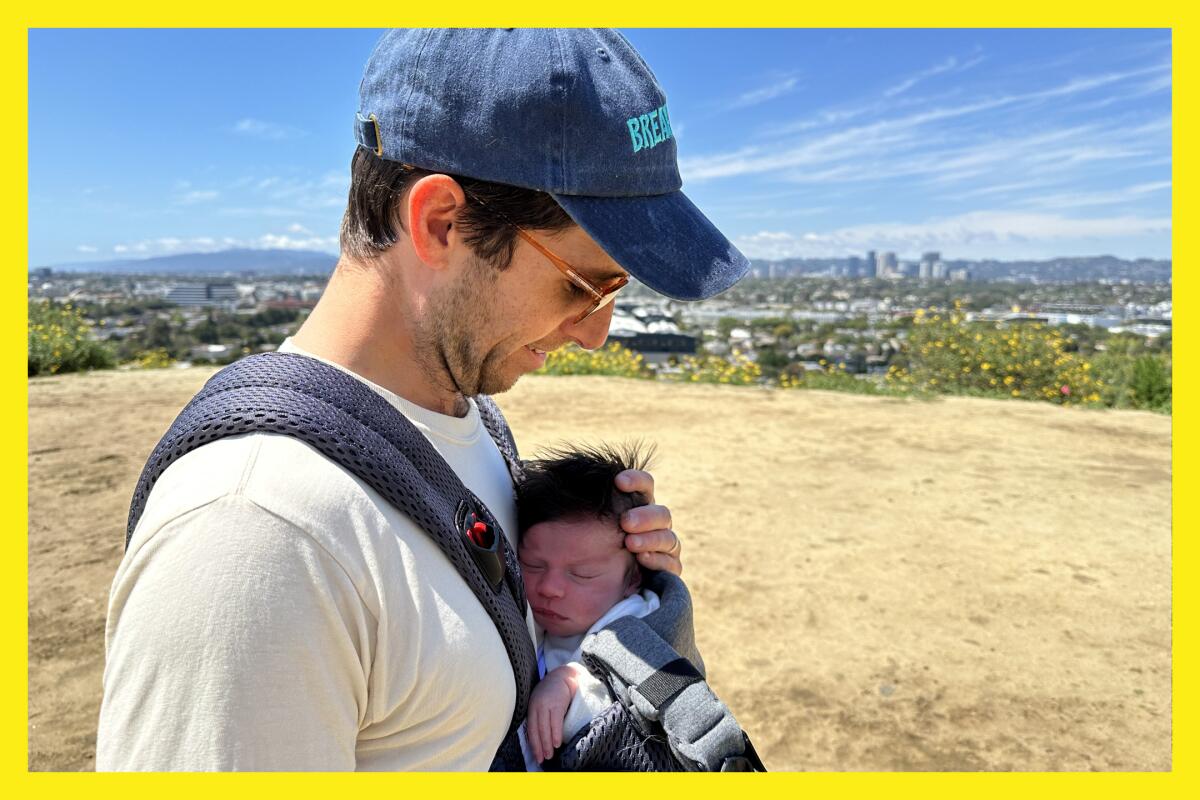
Outdoor time offers a host of benefits for babies. In addition to sensory stimulation, it exposes them to common allergens, which reduces their risk of developing allergies later in life, and it’s actually safer than spending time in crowded indoor places — they’re less likely to catch a virus from another person. Perhaps most importantly, going outside can calm a fussy newborn (and their exhausted parents).
“It can be a useful strategy, especially at the end of the day when everybody’s tired and cranky,” said Dudovitz.
Dudovitz also gave me a few tips to ensure our hike was a success. Rule No. 1 is to keep babies out of the sun, as a newborn’s skin is sensitive and sunscreen isn’t approved for use until they’re 6 months old. (Long sleeves and a sun hat are required equipment.) She recommends staying away from places with mosquitoes; if you can’t avoid bugs, you can pre-treat baby clothes with Permethrin to ward them off. Finally, pay close attention to heat and cold as babies can’t regulate their temperature as well as adults can (feel your child’s torso to gauge their temperature).

Armed with that info, my wife, Emma and I headed out for our first hike. It was a perfect Southern California day, the kind that makes you wonder why anyone would choose to live elsewhere. Warm sunshine spilled down from a deep blue sky, and a fresh breeze rolled in from the ocean as we trekked up the hill from the parking lot.
All around us, the chaparral was lush and alive with blossoms. Mounds of bush sunflowers glowed in the afternoon light, and here and there I noticed patches of coast morning glories, their delicate white cups streaked with purple. Amid the blooms, sagebrush branches stood out with their wispy pale green leaves. I touched them as we passed and savored their sweet, earthy scent. When we reached the top of the overlook, we could see for miles in all directions — the Santa Monica Mountains rising in the distance, the broad blue plane of the Pacific Ocean, and the skyscrapers of downtown L.A. poking up to the east. It was beautiful.
What did Emma think of it? Hard to say. She slept the entire time, stirring only when I took off her hat to snap photos. I think she opened her eyes for 30 seconds total. Even so, my wife and I enjoyed the excursion, and I’m calling this inaugural family hike a success. Next time, maybe Emma will be awake to hear, smell, see and feel all of it too.
3 things to do

1. ID plants and potluck in Topanga Canyon
Go for an all-levels plant identification stroll in the mountains of Topanga with Herb Club LA . The 2.5-mile walk will last about an hour and is open to everyone (even leashed dogs). Afterward, the group will be holding a “late Earth Day celebration” at the dreamy local Topanga shop the Well Refill for a tea meditation and potluck featuring herbal sodas and vegan chocolate. Participants are encouraged to wear comfortable clothes and appropriate shoes for the hike, and — if they plan to take part in the potluck — to bring vegan dishes and reusable plates, cups and utensils to minimize waste. The event is free (with donations accepted) and kicks off Sunday at 11 a.m. For more information visit eventbrite.com .
2. Bike, walk, skate or scoot in SGV
Ditch the car on Sunday and experience what it’s like to roam freely on five miles of streets in Alhambra, San Gabriel and South Pasadena. Active Streets: Mission-to-Mission , presented by Metro Los Angeles and hosted by San Gabriel Valley Council of Governments (SGVCOG), is a car-free celebration packed with live music performances, pop-up booths from local businesses and community organizations, and free games and activities. Walk, bike, skate or scoot through any part of the route — or conquer the whole thing, if you choose. The free event runs from 9 a.m. to 3 p.m. If you’re a San Gabriel Valley resident, you can borrow a classic GoSGV electric bike for $50 by filling out this form . Active Streets was formerly known as 626 Golden Streets — with the Metro “Gold” line becoming the “L” and then the “A,” the name changed.
3. The Earth Day celebrations continue
Though Earth Day happened on Monday, the L.A. celebrations are still going strong. On Saturday, you’ll find guided nature hikes and storytelling at the Chatsworth Nature Preserve , a seed swap at Barnes Park in Monterey Park and the Teen Climate Fest at Long Beach’s Aquarium of the Pacific . You can also get your gloves dirty on Saturday at the Madrona Marsh in Torrance, which is hosting a habitat restoration event . Pre-registration is required and participants should wear closed-toe shoes and bring sunscreen and water.
The must-read

Here’s a fun idea for getting outside and exploring Los Angeles: Go on a walking tour of the city’s bridges. For The Times, writer Adam Markovitz highlights nine spans all around L.A. that are worth checking out, including quaint walkways over the Venice Canals, the historic Shakespeare Bridge in Los Feliz and the new 6th Street Viaduct over the L.A. River. Whether you’re in it for the architecture or looking for some new views of the city, these bridges won’t disappoint.
Happy adventuring,

A recently published book, “ Places We Swim California ,” will get you excited to jump in the water this summer. It highlights over 60 swimming spots all around the state (including several in SoCal) and features road trip itineraries for discovering unique California beaches, rivers and hot springs.
For more insider tips on Southern California’s beaches, trails and parks, check out past editions of The Wild . And to view this newsletter in your browser, click here .
Sign up for The Wild
We’ll help you find the best places to hike, bike and run, as well as the perfect silent spots for meditation and yoga.

Michael Charboneau is a freelance writer covering gear and the outdoors, and he’s writing The Wild newsletter for a few months. He has written for a variety of publications, including Men’s Journal, Runner’s World and InsideHook, and he lives in West L.A. When he’s not writing, he can be found running, hiking and biking around Los Angeles and its mountains.
More From the Los Angeles Times

How to have the best Sunday in L.A., according to Laufey
April 26, 2024

World & Nation
Venice tests 5-euro entry fee for day-trippers as the city grapples with over-tourism
April 25, 2024

Travel & Experiences
This must be Larchmont

What to know about California’s new state park, a scenic green space where two rivers meet
April 23, 2024
- Cover Letters
- Jobs I've Applied To
- Saved Searches
- Subscriptions
- Marine Corps
- Coast Guard
- Space Force
- Military Podcasts
- Benefits Home
- Military Pay and Money
- Veteran Health Care
- VA eBenefits
- Veteran Job Search
- Military Skills Translator
- Upload Your Resume
- Veteran Employment Project
- Vet Friendly Employers
- Career Advice
- Military Life Home
- Military Trivia Game
- Veterans Day
- Spouse & Family
- Military History
- Discounts Home
- Featured Discounts
- Veterans Day Restaurant Discounts
- Electronics
- Join the Military Home
- Contact a Recruiter
- Military Fitness
Who Is Eligible for Space-A Flights?
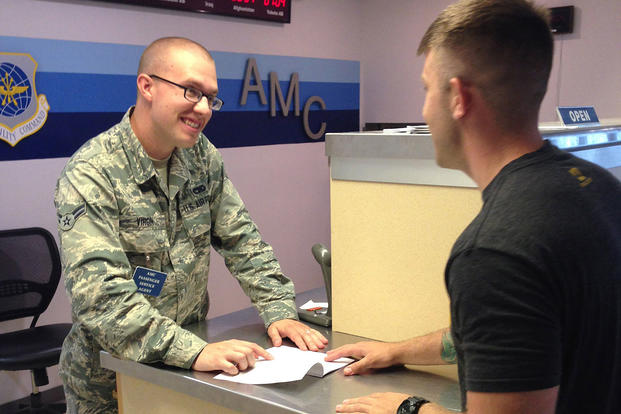
The following is a partial listing of eligible individuals and their category of travel. In Space A terms, your "category" of travel is your priority. The numerical order of space-available categories indicates who gets to board the plane first. Travelers in lower numbered categories move first.
You are placed in one of these six categories based on a combination of two criteria: your status (for example, active duty member, DoDDS teacher, etc.), and your situation (for example, emergency leave, and ordinary leave, etc.).
Once accepted for movement, a space-available passenger may not be "bumped" by another space-available passenger, regardless of category.
A complete listing of eligible passengers by category is found on the AMC website .
Category I - Emergency leave travel
- US citizen, DOD Civilian Employees stationed overseas
- Full-time, paid personnel of the American Red Cross serving with U.S. military overseas
- Military family members whose sponsors are stationed within the Continental United States (CONUS) and the emergency exists overseas
- Family members of U.S. citizen civilian DOD employees when both sponsor and dependents are stationed at the same location overseas
Category II - Accompanied Environmental & Morale Leave (EML)
- Sponsors on EML and accompanied family members.
- DoD Dependent School (DoDDS) teachers and their accompanied family members in EML status during school year holiday, vacation periods.
Category III - Ordinary Leave, House Hunting TDY
- Military members on ordinary leave and military patients on convalescent leave.
- Military members on permissive temporary duty (TDY) orders for house hunting in conjunction with PCS orders. Military member can be accompanied by one family member
- Dependents of military members deployed for more than 365 consecutive days
- Military family members (up to age 23 with a valid ID card) of a military member when accompanied by their sponsor who is in an ordinary leave status between overseas and CONUS
Category IV - Unaccompanied dependents on EML
- Dependents of military members deployed more than 120 consecutive days
- Unaccompanied family members (18 years or older) traveling on EML orders. Family members under 18 must be accompanied by an adult family member who is traveling EML
- DoDDS teachers or family members (accompanied or unaccompanied) in an EML status during summer break
Category V - Permissive TDY, Students, Dependents, Post-Deployment/Mobilization Respite Absence
- Unaccompanied command-sponsored dependents
- Students whose sponsor is stationed in Alaska or Hawaii
- Students enrolled in school INCONUS when the sponsor is stationed overseas
- Military personnel traveling on permissive TDY orders for other than house hunting
Category VI - Retirees, Dependents, Reservists & Disabled Veterans
- National Guard/Reserve components/members of the Ready Reserve and members of the Standby Reserve who are on the Active Status List.
- Retired military members who are issued DD Form 2 and eligible to receive retired or retainer pay & their family members, family members are only eligible if they have an ID card and travel with retired service member.
- Veterans with a VA rated permanent 100% disability and their dependents. Dependents must be accompanied by the sponsor and travel must be in CONUS or directly between the CONUS and Alaska, Hawaii or U.S. territories
- Surviving spouses of retirees or of service members who died on active duty or training status. Their dependents may also travel if accompanied by the surviving spouse.
Stay on Top of Your Military Benefits
Military benefits are always changing. Keep up with everything from pay to health care by subscribing to Military.com , and get access to up-to-date pay charts and more with all latest benefits delivered straight to your inbox.

You May Also Like
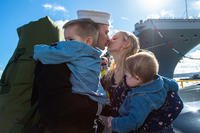
Service members and families are being honored during Military Appreciation Month 2023 with a variety of discounts.
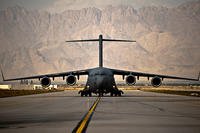
Want to be a Space-A expert? Here are our best tips for flying Space-A.

The Transportation Security Administration's Credential Authentication Technology reads the cards' INDEF date field as...
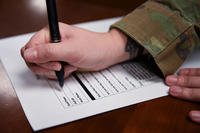
For those who have to line up specialty or mental health care, the back and forth can become a full-time job. But is the...
- Entertainment
- Military Equipment
- Outdoor Guide
Select Service
- National Guard
Popular Discounts Articles

Need some gifts ideas to brighten Mom's day? Grab your military ID and get discounts on the following gifts!

For the Month of the Military Child, we've gathered a list of nine discounts that military families can take advantage of.

The program offers free admission to active-duty, National Guard and Reserve military personnel and their families.

Admission fees at zoos can be costly. So we've put together a list of zoos around the country that offer military discounts.

Major League Baseball teams are showing their appreciation for service members with military discounts on game tickets.
Protect Your Trip »
The 18 best places to see the northern lights.
Check the aurora borealis off your bucket list.
The Best Places for the Northern Lights

Getty Images
The northern lights, known as the aurora borealis, are a spectacular natural light show visible at certain times of the year in the Northern Hemisphere. They occur when electrically charged particles from the sun collide with gases in the Earth's atmosphere, creating vibrant streaks of blue, green, pink and violet dancing across the night sky. 2024 and 2025 are an excellent time to catch the northern lights: Solar activity will be at a peak, making for a more impressive experience, if you're in the right place.
The best places to see the aurora borealis have little light pollution, clear skies and no precipitation. The lights are only visible at northern latitudes when it's dark outside, so the months from September to April are best for seeing the aurora. There's also a Southern Hemisphere counterpart, the aurora australis; there are fewer easy spots from which to view this phenomenon, but if you're lucky, it can be equally brilliant.
For more information on the northern lights, scroll down to the FAQ section at the bottom of this page. Read on to discover the top destinations where you can see the kaleidoscopic northern and southern lights.
Fairbanks, Alaska

Fairbanks is by far one of the best places in the world to view the northern lights, as it's located directly under the auroral oval. This ring-shaped zone sits around the Earth's geomagnetic North Pole and is generally associated with the most vibrant aurora sightings. Visitors can expect to see the lights on an average of four out of five clear nights during aurora season, which lasts from late August to late April.
You can book a northern lights tour to see the aurora from the springs and tubs at Chena Hot Springs Resort. This excursion includes round-trip transportation to the resort from town, a soak in the hot springs, a visit to the Fairbanks Aurora Ice Museum and an aurora viewing tour; dinner and drinks centered around Alaska produce are an option extra with hot drinks supplied.
There's more to Fairbanks than just the northern lights: If you visit in late summer, consider family-friendly activities like a ride on the Riverboat Discovery or gold panning. For a festive holiday experience in the winter, head around 15 miles out of Fairbanks to visit the Santa Claus House in the city of North Pole. Travelers can also see ice sculptures in February and March at the impressive World Ice Art Championships or take a dog-sledding or snowmobiling tour .
Where to stay: For excellent chances of aurora viewing, book a private igloo at Borealis Basecamp, a top glamping resort located on 100 remote acres of boreal forest about 25 miles from Fairbanks. With activities like dog-sledding on top of aurora viewing, past visitors regularly describe it as a once-in-a-lifetime experience.
Tromsø, Norway

Located about 220 miles above the Arctic Circle, Tromsø is one of several top spots to view the northern lights in Norway. At the darkest point of the aurora season – which runs from September to early April – the sun doesn't rise in this northern part of the country, although there is twilight during the day. With this level of darkness, there are more opportunities to see the aurora.
Tromsø itself is a small but lively city, so there's plenty to see and do when you're not looking up at the sky, including a visit to the beautiful Arctic Cathedral. In late January to early February, the city hosts the Northern Lights Festival, a 10-day music and performing arts event featuring a variety of musical genres.
Aurora chasers can view the lights on their own while in town, but to get a better view, it's recommended to head away from the city lights. Arctic Circle Tours is one company offering guided trips, with small groups for a more personal vibe. Alternatively, adventure-seekers can embark on an exhilarating husky trekking expedition in the Arctic wilderness.
Where to stay: For accommodations with harbor views, look no further than the Scandic Ishavshotel – guests love it for its convenient central location in the city, as well as its plus-sized breakfast buffet with plenty of choices.
Luosto and Rovaniemi (Lapland), Finland

Lapland is located within the Arctic Circle in the northernmost part of Finland. The northern lights are most visible here between the end of August and April – and approximately 200 times a year – so there are many opportunities for aurora spotting. Finnish Lapland is also known as home to the Sámi people (the only recognized Indigenous group in the European Union region), some 200,000 reindeer and Santa Claus – who can be visited in the town of Rovaniemi, the region's largest city and a great base for your aurora expedition.
Consider venturing roughly 70 miles north of Rovaniemi to the resort town of Luosto, set among the picturesque and hilly landscape of Pyhä-Luosto National Park. Here, you can also spend a magical evening outdoors under star-filled skies during a reindeer-drawn sleigh ride through the snow-covered forests. Jaakkola Reindeer Farm offers a reindeer sleigh tour to spot the aurora once weekly; it includes a stop to warm up at a bonfire camp with snacks, hot beverages and local fireside stories.
Where to stay: For a bucket list experience, watch the impressive light show from a glass igloo at Santa's Hotel Aurora & Igloos in Luosto. Past visitors love the cozy atmosphere here, boosted by amenities like saunas and log fireplaces. If you're sticking to Rovaniemi, the Arctic TreeHouse Hotel is a stunning choice, with designer cabins perched among the snow-covered taiga forest.
Orkney, Scotland

This group of captivating (and mostly uninhabited) islands, located about 10 miles off Scotland's remote northern coast, is one of the best places to see the northern nights in the U.K. Fall and winter are the best seasons to witness the aurora, also known in local Shetland dialect as the "Mirrie Dancers," with fall bringing the highest proportion of clear nights. A few places to see the spectacular light show include along the coast at Birsay or the Broch of Gurness, an archaeological ruin on a sweeping and dramatic coastline.
In addition to the aurora, Orkney is home to breathtaking coastal landscapes and more sheep than you can count (try some local lamb, if you can). Travelers can also visit the Heart of Neolithic Orkney, a UNESCO World Heritage Site with several monuments dating back 5,000 years.
Where to stay: During your visit, plan to stay in the historic town of Kirkwall, the capital of the Orkney Islands: The no-fuss Ayre Hotel offers harbor views, and past visitors compliment the hearty meals in the hotel restaurant. Spot the aurora close to town at Inganess Bay and Wideford Hill.
Yellowknife, Canada

Yellowknife, the capital of Canada 's Northwest Territories, dubs itself the "Aurora Capital of the World." Thanks to its position in the middle of the auroral oval, the city puts on one of the world's most awe-inspiring light shows. The period from mid-November to the beginning of April is the recommended time to spot the aurora, but it's also possible to see the aurora during more hospitable weather from late summer to early fall as the lights are visible up to 240 days a year.
Located on the northern shore of Great Slave Lake, Yellowknife boasts winter sports such as ice fishing and cross-country skiing. If you visit in March, plan to attend the monthlong Snowkings' Winter Festival, which features events and activities like a snow-carving competition, a snow castle, live music and more.
For a unique experience, book a tour through Aurora Village to view the lights. The property will pick you up from your hotel and take you to its site, where you can stay warm in a tent while sipping hot beverages. The Aboriginal-owned Aurora Village also offers activities such as dog-sledding or snowshoeing excursions.
Where to stay: Warm up in the fireside lounge at The Explorer Hotel in Yellowknife. Previous visitors note the warm and helpful staff as a strength here.
Jukkasjärvi, Sweden

The optimal time for seeing the illuminated skies in the northern part of Sweden, known as Swedish Lapland, is between early September and late March. The small Swedish village of Jukkasjärvi sits around 125 miles above the Arctic Circle on the Torne River and is an ideal locale for aurora viewing. You'll fly to the nearby Kiruna Airport to get here. With the village's origins dating back to the 17th century, you can still find some of the original homesteads, including an old timber cottage. Today the village boasts 800 residents – and more than 1,000 dogs.
Where to stay: If you're up for a chilly overnight adventure, reserve accommodations at the world's first permanent ice hotel, the aptly named Icehotel 365. Each of its artist-designed suites is sculpted from ice with a unique theme and maintains temperatures around minus 5 degrees Celsius (about 23 degrees Fahrenheit). The rooms also feature beds with reindeer hides and thermal sleeping bags so you can bundle up during the night. While you're at the property, take advantage of the guided "Northern Lights Safari on Snowmobile" or embark on the "Moose Safari on Horseback" atop an Icelandic horse.
Reykjavik, Iceland

October through March is the best time to chase the aurora borealis in Iceland . There are numerous natural parks and attractions throughout the country where you can view the show during the long and dark winter, but the capital city of Reykjavik also offers many options for accommodations, restaurants, tours and other activities for your visit. For optimum aurora viewing in the city away from the light pollution, head to Öskjuhlið. This wooded and hilly area in Reykjavik sits at 200 feet above sea level and has walkways and paths where you can see the nighttime show.
Atop this hill sits Perlan, which houses the only planetarium in the country and a museum featuring exhibits about Iceland. Perlan is also home to the world's first indoor ice cave and glacier exploratorium. During your visit, don't miss the panoramic views of the city from the building's fourth-floor observation deck. From this vantage point, you'll be able to see the Snæfellsjökull glacier; Keilir, a volcanic mountain; and Esja, the mountain of Reykjavik.
Where to stay: While in Reykjavik, splurge on an overnight tour with Buubble Tours. This experience includes breathtaking sightseeing spots and a night spent under the magical northern skies in a transparent bubble at the 5 Million Star Hotel. For longer stays, consider the eco-friendly Eyja Guldsmeden Hotel, with sweeping views of the city – guests love it for its cozy yet chic Scandinavian design.
Southern Iceland

While Reykjavik is a great aurora-viewing spot if you like having amenities close by, consider getting out into Iceland's stunning, otherworldly countryside for a unique backdrop for the northern lights. One unique place to see them is the black sand beach at Reynisfjara (but watch out for the dangerous waves here). Alternatively, head to Jökulsárlón, a glacial lagoon and seal habitat, where the aurora's reflections in the icy water are truly beautiful.
There's no shortage of tours that will stop by these locations and more for possible aurora sightings. Consider a 10- or 13-day tour around the country with Fun Travel, or a four-day option from Arctic Adventures. If you want to do things at your own place, it's also possible to self-drive – just know that road conditions can be icy, particularly in the depths of winter (although Icelandic roads are generally well-maintained).
Where to stay: Hotel Rangá is a formidable option for aurora-spotting. It offers a variety of special amenities, such as aurora wake-up calls, a lookout deck and snowsuits to keep you warm if you're outside viewing the lights. Past visitors praise Rangá for being a comfortable yet luxurious place to relax, be it in the outdoor hot tubs or the cozy and sociable bar.
Kangerlussuaq, Greenland

Greenland may not be the most accessible place to travel for viewing the northern lights, with limited flight options (mostly via Iceland), but those who make it here will be thrilled they did. The tundra of Kalaallit Nunaat – the Greenlandic name for the country – is one of the best places on the globe to see the aurora from September to early April.
For the more adventurous aurora seekers, head to the top of the Greenland Ice Cap for spectacular views of the lights. This impressive glacier covers 80% of the country and is accessible via the tiny town of Kangerlussuaq. Located on a fjord right along the Arctic Circle, the town, often described as a gateway to Greenland, was a former U.S. Air Force base and is now home to Greenland's main airport. The town is known for having clear skies on some 300 nights per year, so chances of a sighting are particularly good here.
Tour company Guide to Greenland offers various tours, from two-hour aurora-viewing trips to a tough but rewarding multi-night dog-sledding expedition across the ice. For a less strenuous experience, companies like Nordic Saga Tours offer cruises through the Arctic landscapes around Kangerlussuaq.
Viking cruise along Norway's coast

Courtesy of Viking
Embrace the winter and set sail for the Arctic Circle to experience the aurora in northern Norway. The 13-day "In Search of the Northern Lights" cruise itinerary with Viking departs from London for the North Sea with stops in ports of call that are top aurora-viewing locales, including Tromsø, Alta and Narvik, plus a stop in Amsterdam en route. The cruise ends in Bergen, Norway.
While on land, take in the natural beauty of the snow-blanketed landscapes and book bucket list excursions like a night spent in an igloo or a reindeer sledding adventure. You can also chase the lights into the wilderness by snowmobile, take a dog sled ride under the stars or view them from a Sámi tent atop the mountain Pæska in Alta. This Viking Ocean Cruises itinerary is offered with departure dates from mid-January to mid-March.
Headlands International Dark Sky Park, Michigan

Regarded as one of the top spots in the U.S. to see the aurora outside Alaska, Headlands International Dark Sky Park sits at the top of Michigan 's lower peninsula, less than 5 miles from Mackinaw City. While the northern lights are less common here due to the relatively southern location, the best time to catch a glimpse of this phenomenon is typically during the spring and fall – and appearances can usually be predicted a couple of days in advance. The park even maintains an online Clear Sky Chart so you can check the weather forecast before you go.
There are also other stargazing opportunities throughout the year at Headlands. During the summer months the Milky Way is visible across the sky, and late summer evenings entertain visitors with meteor showers.
Where to stay: If you're visiting between late April and the end of October, splurge on a stay at Mission Point Resort on Mackinac Island, where the aurora should also be visible. Guests describe this iconic property situated along the shoreline of Lake Huron as positively charming, thanks to its historic nature and manicured grounds. The resort also offers a host of outdoor activities from bike rentals to swimming.
Tips on Trips and Expert Picks Newsletter
Travel tips, vacation ideas and more to make your next vacation stellar.
Sign up to receive the latest updates from U.S News & World Report and our trusted partners and sponsors. By clicking submit, you are agreeing to our Terms and Conditions & Privacy Policy .
Voyageurs National Park, Minnesota

Martha Shuff | Courtesy of Voyageurs National Park
Located on the international border between Minnesota and Ontario, Voyageurs National Park is an approximately 218,000-acre labyrinth of boreal forests, lakes and streams. Voyageurs is Minnesota's only national park; it's also unique in that the park's interior is accessible only by boat, unless you visit by snowmobile in winter. As a certified International Dark Sky Park , Voyageurs provides opportunities to view the Milky Way on clear evenings, especially in the summer. Year-round aurora viewing is also possible on evenings with clear dark skies, but chances are better during the winter, when it's dark for longer.
For a guided stargazing tour – including the Milky Way, the constellations and (if you're lucky) the northern lights – book with Voyageurs Outfitters. If you're on your own, park officials note that almost any campsite is a good spot for northern lights viewing and stargazing. You can also check out the boat launch areas around Ash River, Kabetogama Lake and the Rainy Lake Visitor Center for top-notch views.
Where to stay: Those who prefer to sleep in a warm, cozy bed instead of camping under the stars can make reservations at the Cantilever Distillery + Hotel, a boutique Trademark Collection by Wyndham property in the nearby town of Ranier, Minnesota. Visitors report that there's a lot to like here, from the industrial-chic rooms to friendly staff to top-notch cocktails in the active distillery on the premises.
Abisko National Park, Sweden

Given its Arctic location, Sweden is one of the prime spots for aurora viewing in the Northern Hemisphere, with Swedish Lapland at the top of the list. The fall and winter months (from September to March) offer the best opportunities to witness the spectacle, as there is more darkness than light during the days.
If you're up for the Arctic adventure, December is an ideal month to visit Abisko National Park, which some regard as one of the best places on Earth to see the lights dance across the sky. The park's mountainous terrain and clear dark skies offer dramatic front-row seats for viewing the northern lights. The Aurora Sky Station is one of the best vantage points to see the aurora in the park. Join one of the expert presentations to learn about the science behind this fascinating phenomenon.
If you'd prefer to chase the lights with a curated tour, professional photographers and aurora-chasing guides at Visit Abisko lead three- to four-hour tours throughout the fall and winter. If you can, try to join the tours in fall, as this time of year offers a unique opportunity to view the lights both in the sky and reflected in the lakes and rivers, which you won't see in the winter months.
Where to stay: For cozy Nordic vibes, stay at Abisko Mountain Lodge, which also offers activities like ice climbing and snowmobile tours in winter. Guests love the excellent restaurant here, which offers Swedish specialties ranging from salmon to moose.
Nellim, Finland

Courtesy of Wilderness Hotels
Located a stone's throw from the Russian border in Finnish Lapland, this remote Arctic destination is a top-rated locale to view the northern lights due to the lack of light pollution. You'll be seriously out of the way of any built-up areas, as there's not even a paved road into Nellim. The best time to visit is between December and early April. This village is a great place to hunker down in a lodge and relax while enjoying a slice of life in the Finnish wilderness.
Where to stay: The Nellim Wilderness Hotel offers a perfect base with year-round activities, including aurora-chasing tours by car, snowmobile or on snowshoes. You can even take a sleigh ride through the snow to a campsite on Lake Inari to spot the aurora in pristine nature.
Beyond standard rooms, the Wilderness Hotel also offers glass-roofed cabins, as well as classic log cabins and bubble-shaped accommodations for two where guests can watch the dancing lights through the glass roof above your warm, cozy bed. When you're not chasing the lights, enjoy other Arctic activities like a husky safari, ice fishing, snowmobiling or a day in the snow meeting the local reindeer.
Saariselkä and Kakslauttanen, Finland

These two towns are around 150 miles above the Arctic Circle, with a prime location under the auroral oval, allowing as many as 200 opportunities per year to see the northern lights (weather permitting, of course). This area in Finnish Lapland is known for its stunning scenery, Sámi culture, cross-country and downhill skiing, and Urho Kekkonen National Park – one of Finland's largest.
Ski enthusiasts can roll two trips into one by hitting the slopes by day in Saariselkä and aurora spotting by night at Finland's northernmost ski resort. March into early April is the best time to view the aurora, as the Finnish Meteorological Institute notes that the weather is usually clearer at this time of year. But it's possible to see the northern lights at any time during the season from late August to early or mid-April.
Where to stay: Seven miles south of Saariselkä sits the village of Kakslauttanen, where you can book two- or four-person Glass Igloos at the Kakslauttanen Arctic Resort. The new Kelo-Glass Igloos, which sleep up to six, mix the comforts of a log chalet with the visibility of the glass roof; enjoy a private sauna, a fireplace and more. There's also an impressive selection of year-round tours and activities at this resort, including northern lights excursions on snowmobiles or by horse-drawn carriage.
Stewart Island, New Zealand

Courtesy of RealNZ
Although they may be isolated, some far-south destinations offer the chance to see the aurora australis – or southern lights. While you might be able to see them year-round in some locations (just as with the northern lights), certain months are better for aurora viewing in the Southern Hemisphere. Stewart Island is regarded as one of the top spots to see the brilliant display in New Zealand , with 85% of the island encompassed by Rakiura National Park, so there are few people and virtually no light pollution. You can reach Stewart Island by flying in from Invercargill or taking a ferry from Bluff.
New Zealand's winter months – June to August – are the best time to see the southern lights; spring and fall are also not bad times to spot them. The brighter summer months, between December and February, make it more difficult to spot the aurora, but there's still a chance you'll catch a glimpse between midnight and 4 a.m.
Where to stay: Consider reserving a room with at Stewart Island Lodge, an intimate bed-and-breakfast. This beautiful property is just minutes by foot from the village of Oban, and the property will pick you up at the ferry terminal for your stay. Past visitors rave about the spectacular views of Halfmoon Bay and the Foveaux Strait from both the rooms and lodge terrace.

Tasmania sits approximately 150 miles south of mainland Australia. This mountainous island is one of relatively few places on the planet where it's theoretically possible to see the aurora 365 days a year due to its latitude, which allows for full darkness even on summer nights. The capital city of Hobart is the easiest point of entry: It's home to Tasmania's largest airport and serves as a convenient base. The city's burgeoning food and cultural scenes will also give you plenty to see and do.
From here you'll be able to reach several great viewing locations with unobstructed and open views of the sea along the southern and southeast coastlines, like Goat Bluff and Tinderbox Bay. When you're not staring at the night sky, splurge on a once-in-a-lifetime helicopter flight with Tasmanian Air Tours. Depending on your whims, your private pilot can whisk you away to soar over the sea cliffs; stop at a local winery to sample local vintages; or head south to the UNESCO World Heritage Site of Port Arthur , Tasmania 's historic and most notorious prison.
Where to stay: Reserve accommodations at The Tasman, a Luxury Collection Hotel, Hobart. The historic luxury property is situated along the lively waterfront area with harbor views. Past guests admired the historic building housing the hotel and loved the heritage rooms featuring gas fireplaces for those cold Tasmanian nights.
Expedition cruise to Antarctica

If you're one of the lucky few people on the planet to travel to the southernmost continent on Earth, it may be pricey, but you'll have an adventure of a lifetime in Antarctica, especially if the aurora illuminates the sky. The southern lights are most visible in the winter months (between March and October), but due to weather conditions, only researchers brave the Antarctic winter – and they mostly stay indoors.
However, all hope is not lost if you seek to view the aurora australis in Antarctica. Late-season expedition cruises to this continent offered in March also bring the opportunity to view the southern lights and enjoy the end of Antarctica's fleeting summer. As the days shorten in length, you may encounter light snow across the extreme landscape and ice starting to form on the water's surface.
When it comes to wildlife viewing, humpback whale sightings are abundant, and you'll still see penguin colonies – including king and gentoo penguins. You can also keep your eyes peeled for elephant seals, leopard seals, wandering albatross and other species of birds. When night falls on clear evenings, look for the light show in the southern sky. Companies that offer March voyages include Swoop Antarctica, Atlas Ocean Voyages, Silversea Cruises , Aurora Expeditions and Hurtigruten Expeditions.
Frequently Asked Questions
There's no one location that's widely accepted as the best place to see the northern lights. However, the strongest light displays are within what's called the "auroral oval": a rough circle around the Earth's magnetic northern pole that tends to occur around 60 to 70 degrees of latitude. The oval's exact size expands and contracts (some more southerly destinations can fall under it when the aurora is particularly strong), but there are certain locations that generally fall within the oval most of the time.
These places include:
- Central and northern Alaska
- Large areas of Yukon, the Northwest Territories and northern Quebec in Canada
- Southern Greenland
- Far northern Norway, Sweden and Finland
Within these areas, it could be argued that Iceland is the best place to see the aurora as it experiences much milder temperatures than some other areas within the oval. But this is subjective, and some travelers may prefer a location like Yellowknife in Canada for a full-on, very cold Arctic experience.
The northern lights are only visible when it's dark out. Since many of the best places to see them are so far north that they experience near-constant daylight in the summer, you'll generally want to schedule a trip between late August and early April. However, within this time period, there's some debate about the best time to catch the lights. For example, the aurora tends to be more active around the September and March equinoxes due to stronger solar winds – but on the other hand, your chances of seeing them may be higher in the depths of winter, since there's longer nights and therefore a longer window in which they might appear.
In more southern locations like Minnesota, it may be possible to see the light show in the summer months, but it's still advisable to go at a time when the nights are longer. It can also be worth trying to schedule your northern lights trip when there's a new moon: While the aurora can shine through moonlight, it may be harder to see if there's a full moon.
Of course, cloudy weather can block the aurora even if you go at the right time of year. So, it may be wise to research the local weather patterns at your chosen destination to find out if there's a month where you can expect clearer skies. In many cases, though, there's a little luck involved.
These two countries can offer excellent views of the northern lights, since both are directly under the typical auroral oval. Yet there are some differences to be aware of.
In Norway, you'll need to head to the north of the country to catch the aurora: While they have been sighted in Oslo , the capital and largest city, it's too far south to be a reliable vantage point. Cities like Tromsø are popular spots, but direct flights there are only possible from some European cities, so North Americans will have to take connecting flights. On the other hand, Iceland is generally easier to reach, with direct flights to its capital, Reykjavik, from a large number of U.S. destinations (particularly from the East Coast) with no further connection required.
Since clear skies are key for seeing the northern lights, weather is another factor to consider. In November, December and March, Reykjavik has statistically slightly more frequent clear skies, while in January and February, Tromsø is a little better, but the difference isn't big: Both places have clear skies only around 25 to 30% of the time in these months. Reykjavik has slightly warmer weather, though, so between that and the ease of access, it has a slight edge over Norway for seeing the northern lights.
Alaska and Iceland are known for stellar aurora light shows, so deciding between them may depend on which destination you find more convenient and more to your tastes. In Alaska , the city of Fairbanks is considered a great spot to catch the northern lights. (They can still be seen elsewhere in the state – for example, in Anchorage, although they're not so common in more southern locations like Juneau). The advantage of Fairbanks is that you won't need a passport , yet there aren't many direct flights from the lower 48 states. Despite being an international destination, Iceland may be more accessible (particularly from the eastern U.S.), thanks to fairly regular flights to Reykjavik from numerous American cities.
Fairbanks does offer statistically better weather for aurora viewing: It has clear skies more often than Reykjavik, particularly in March when the Alaska city experiences them around 45% of the time (compared to about 25% for Reykjavik). But you'll have to be able to tolerate the cold. While temperatures in Reykjavik hover around freezing in midwinter, Fairbanks is a veritable deep freeze, with average highs around 5 degrees Fahrenheit down to lows colder than minus 5 in December.
Why Trust U.S. News Travel
Timothy Forster , as a Canadian who has traveled from coast to coast in that sprawling country, knows all about travel in the cold northern reaches of the world. Forster used his extensive traveling background along with research expertise to curate this article.
You might also be interested in:
- The Top Waterfalls in Iceland
- The World's Top Treehouse Hotels
- The Most Beautiful Beaches in the World
- The Best Travel Insurance Companies
Most Beautiful Landscapes in the World

Tags: Travel , Vacation Ideas
World's Best Places To Visit
- # 1 South Island, New Zealand
- # 4 Bora Bora
If you make a purchase from our site, we may earn a commission. This does not affect the quality or independence of our editorial content.
You May Also Like
Flight canceled or delayed what to do.
Amanda Norcross April 26, 2024

The Best Beach Hats
Megan Johnson and Sharael Kolberg April 26, 2024

The Best Florence Tours
John Rodwan April 25, 2024

The 9 Best Louisiana Swamp Tours of 2024
John Rodwan April 24, 2024

How Much Does a Cruise Cost?
Gwen Pratesi April 24, 2024

The Best Whale Watching in Cape Cod
Lyn Mettler April 24, 2024

Best Whale Watching Tours in Maine
Marisa Méndez April 23, 2024

The Best Wineries in Napa Valley
April 23, 2024

The Best East Coast Beaches
April 19, 2024

The Best Luggage Brands
Rachael Hood April 17, 2024


Largest Batch of Earth-size Habitable Zone Planets Found Orbiting TRAPPIST-1

TRAPPIST-1: Largest Batch of Earth-sized Exoplanets
The most studied planetary system, aside from our own solar system, lies about 40 light-years away. We've looked at the seven rocky exoplanets orbiting the TRAPPIST-1 star with ground and space telescopes like Spitzer, Kepler, Hubble, and, now, the James Webb Space Telescope.
In March 2023, the first science from the Webb telescope was released. An analysis of TRAPPIST-1b, the innermost planet, revealed its dayside temperature and found little evidence of an atmosphere .
In a press release on February 22, 2017, NASA announced the discovery of the most Earth-sized planets found in the habitable zone of a single star, called TRAPPIST-1. This system of seven rocky worlds–all of them with the potential for water on their surface – is an exciting discovery in the search for life on other worlds. There is the possibility that future study of this unique planetary system could reveal conditions suitable for life.
In February 2018, closer study of the seven planets suggested that some could harbor far more water than the oceans of Earth, in the form of atmospheric water vapor for the planets closest to their star, liquid water for others, and ice for those farthest away. The study pinned down the density of each planet more precisely, making TRAPPIST-1 the most thoroughly known planetary system apart from our own.
A 2021 study revealed more about TRAPPIST-1 planets. They are likely made of similar stuff, but they are different from Earth. That could mean they all contain about the same ratio of materials thought to compose most rocky planets, like iron, oxygen, magnesium, and silicon. But if this is the case, that ratio must be notably different than Earth's: The TRAPPIST-1 planets are about 8% less dense than they would be if they had the same makeup as our home planet.
Exoplanet surface in 360 VR
An artist's illustration of TRAPPIST-1d takes you to the surface of the third planet from the red TRAPPIST-1 star. From here, the star looms larger than our Sun and its light casts a red glow across the sky. Look up, and you may catch a glimpse of its six sister planets, as visible as our Moon is from Earth. View on YouTube
Planet hop from TRAPPIST-1 e
Take a trip with the Exoplanet Travel Bureau to the fourth planet in the TRAPPIST-1 system, TRAPPIST-1 e, a world swimming in water in perpetual twilight. Its sister planets gracefully light up the sky, promising another adventure just a hop away.
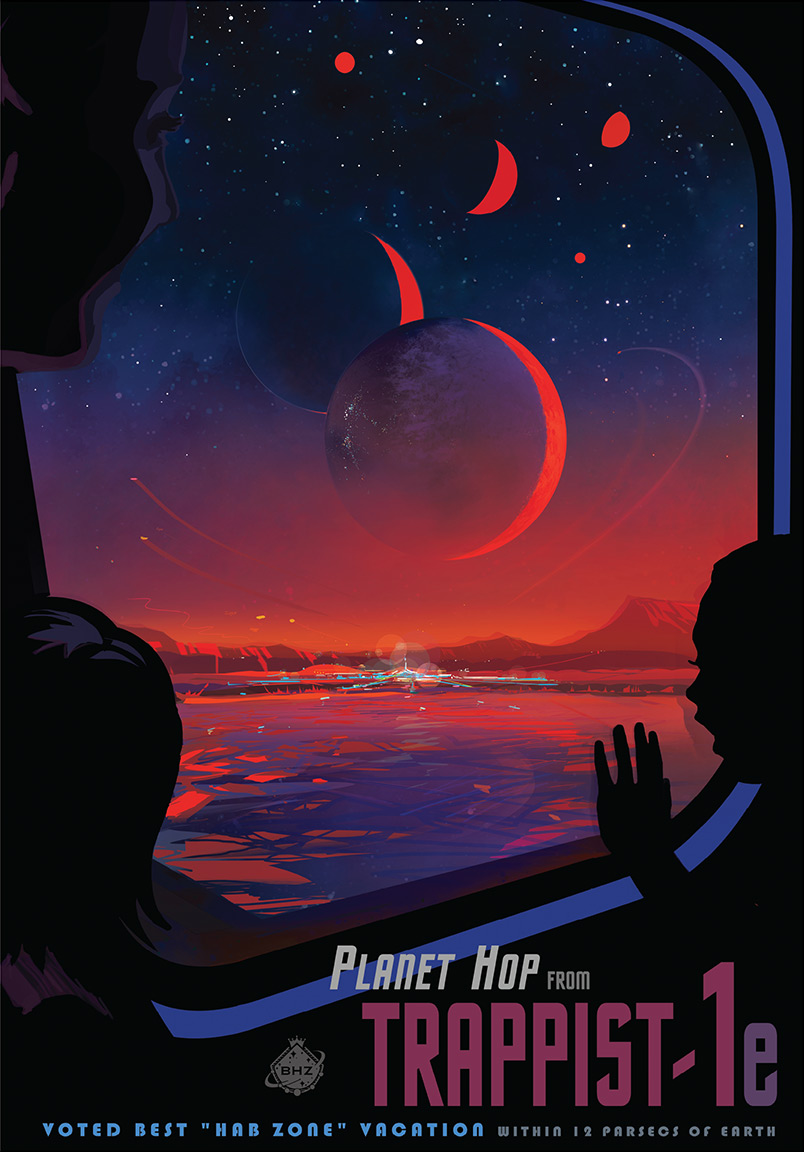
Interact with the TRAPPIST-1 system in 3D
You can fly through the TRAPPIST-1 planets and see an artist's concept of the surfaces on your phone or with a desktop app. Compare each planet to Earth or Jupiter, compare the TRAPPIST-1 system to our solar system, and see how far the habitable zone extends. With the touch of a screen or the click of a mouse, you can visit the newly discovered TRAPPIST-1 system in the our Exoplanet Catalog. It contains every exoplanet discovery, powered by NASA's Exoplanet Archive, the official database used by professional astronomers engaged in exploring new worlds.
TRAPPIST-1 System in 3D

Latest images and videos

More TRAPPIST-1 images

Before and After
Trappist-1 system Spitzer findings
Before and after the discovery of four new planets
Related Videos

Not so strange new worlds
Since 2017, we knew the TRAPPIST-1 system had seven Earth-sized planets. Now in 2018, a study using new data – including extensive observations by NASA's Spitzer and Kepler space telescopes – has provided more information about this amazing system.

Hubble probes atmospheres of exoplanets in TRAPPIST-1 habitable zone
Astronomers using the Hubble Space Telescope have conducted the first spectroscopic survey of Earth-sized planets in the TRAPPIST-1 system’s habitable zone.

News conference images and videos
See the TRAPPIST-1 gallery of art and animations at Caltech's Spitzer telescope site, as of Feb 2017.

NASA news conference
Archived footage of the NASA news conference announcing the discovery of the seven TRAPPIST-1 planets on February 22, 2017.

Treasure trove of planets
This video features interviews with the scientists who discovered the system of seven planets orbiting TRAPPIST-1, an ultra-cool dwarf star.
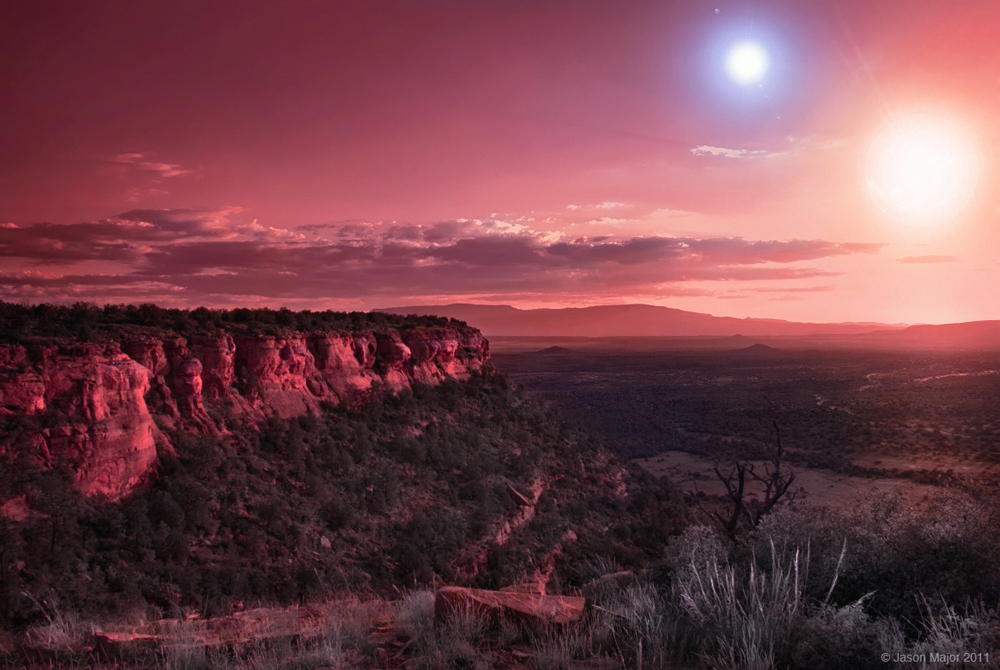
Weirdest habitable worlds
How would life be different around a red star? While we don’t know if there is life on the TRAPPIST-1 planets, we do know that any life discovered there would likely be very different from life on Earth.

Seven wonders of TRAPPIST-1
This video details a system of seven planets orbiting TRAPPIST-1, a discovery of the Spitzer Space Telescope, operated by NASA's Jet Propulsion Laboratory in Pasadena, California.
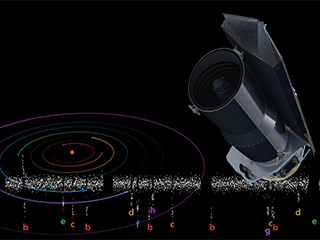
This animation visualizes the change in light as each planet passes in front of its star. The study established the planets' size, distance from their sun and, for some of them, their approximate mass and density.
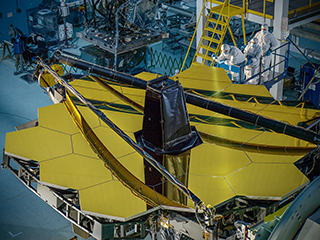
How do we know what air is like on other planets?
How do we know what the air is like on planets we haven't visited? This James Webb Space Telescope video explains how to see air from 150 light-years away.

Animation: Planetary orbits and transits
An animation of the seven TRAPPIST-1 planets transiting in front of their red dwarf star.

Animation: TRAPPIST-1 planets flyaround
This video depicts artist's concepts of each of the seven planets orbiting TRAPPIST-1, an ultra-cool dwarf star. The planets appear in the order of innermost to outermost planets.
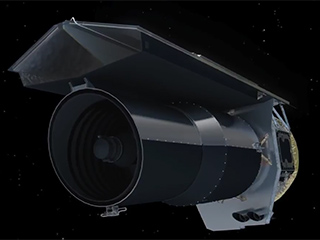
Animation: Spitzer Space Telescope
This animation portrays NASA's Spitzer Space Telescope in space.
Related Articles
Can life survive on a trappist-1 planet.
A bumper crop of Earth-sized planets huddled around a red dwarf star could be little more than chunks of rock blasted by radiation. Or they could harbor exotic lifeforms, thriving under orange twilight skies.
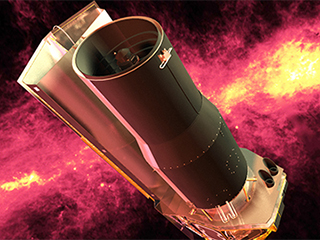
NASA's Spitzer Space Telescope news
The extraordinary TRAPPIST-1 finding was made possible with over 21 days of near-contiguous Spitzer Space Telescope observations of the ultra-cool M-dwarf.

Ultracool Dwarf and the Seven Planets
The European Southern Observatory's news release describes the temperate Earth-sized worlds found in an extraordinarily rich planetary system.
Discover More Topics From NASA
Search for Life

Black Holes


IMAGES
VIDEO
COMMENTS
Reminder to Space-A travelers: Keep in mind there is no guarantee you will be selected for a seat. Space-A travelers must be prepared to cover commercial travel expenses if flight schedules are changed or become unavailable to allow Space-A travel (Per DODI 4515.13, Section 4, Paragraph 4.1.a).
These eligible passengers can "hop" on the flights on a space-available (Space-A) basis. This is where the term "military hop" comes from. Because these are military, not commercial, flights, the military mission is always the priority. You may fly on a commercial plane, but you could also be in a cargo plane or fuel tanker.
Benefit overview. Service members and their families can use Space-A flights - formally known as Military Airlift Command or MAC flights - to travel around the country and world at a reduced cost or for free. Though sometimes unpredictable, military flights are perfect for families with flexible plans and limited travel budgets.
Other Space-A flights will be on large — and loud — military cargo planes, complete with five-point harnesses for passengers during lift-off and landing. Patriot Express flights also charge a $20-35 fee per passenger, so plan accordingly. Bring supplies for a comfortable flight. Consider taking a small sleeping bag, pillow, blankets and ...
Space available flights, a.k.a "MAC flights" or "military hops," are military operational flights that have extra seats. The military mission is the priority, and the Space-A passengers are essentially cargo. There is no charge to fly Space-A except on Patriot Express (PE) flights, for which Space-A passengers must pay a small per ...
Space-A is being able to travel on DOD aircraft for free or at a limited cost. The flights you take are on a space-available basis, and the number of passengers they take will depend on the flight. Space-A can get you to many different places worldwide, but some locations are more challenging to fly to than others.
Answer: To travel space available and depending on your status, you must have in your possession the following items, a valid Department of Defense issued Identification card, travel authorizations (orders), for example, leave form, unaccompanied dependent memorandum, EML orders, DD Form 1853, or emergency orders. ...
As a Space A traveler, you may check two pieces of luggage at 70 pounds each per person. Family members traveling together may pool their baggage allowance as long as the total does not exceed the ...
The Space-Available travel program is a travel benefit that allows authorized passengers to occupy DoD aircraft seats that are surplus after all space-required passengers and cargo have been accommodated. Space-A travel is allowed on a non-mission interference basis only. Space-available travel is a privilege (not an entitlement) available to ...
Military.com. Published January 21, 2017. Space Available Flight, better known as Space A or military hops, is a unique privilege provided to servicemembers, retirees and their families. Under the ...
Once registered, your names remain on the Space A flights register for whichever occurs first: 60 days, or; the duration of the travel orders/leave authorization, or; until you are selected for travel
Blaylock said if service members are interested in traveling Space-A soon, the best way to get started is by coming to the terminal or calling to get information. The Passenger terminal is located at 407 S. Frank Luke Dr. and can be contacted by phone at 210-925-8715/8714 Monday through Friday from 7:30 a.m. to 4:30 p.m.
Space-A travel is a privilege available to members of the community that allows us to fly free (or nearly free) on military aircraft. As Space-A passengers, we are essentially hitching a ride (or "taking a hop," as flying Space-A is often called) on a flight that is deemed a military mission. After all equipment and personnel required for ...
The Space-A page contains a vast amount of information on Space-A eligibility including 100 percent DAV criteria. Space-A is a privilege that may offer substantial savings for your leisure travel. Our team strives to provide a wide variety of information for our travelers to use in while making their travel preparations for either a PCS/TDY or ...
Frequently Asked Questions To assist with your traveling, here is a list of frequently asked questions accompanied by the answer. Question 1: Is Space A travel a reasonable substitute for travel other than on a commercial airline? Answer 1: The answer depends on you!If your travel schedule is flexible and your finances permit for a stay (sometimes in a "high-cost" area), while awaiting ...
Benefit Highlights. Space-A Travel is a privilege (not an entitlement) that is afforded to Uniformed Services members, retirees and dependents as an avenue of respite from the rigors of Uniformed Services duty and may offer substantial savings for your leisure travel plans. Remember there is no guaranteed space for any traveler.
Summary. Space Available (Space-A) travel allows authorized passengers to occupy Department of Defense (DoD) aircraft seats that are surplus after all Space Required (Space-R) passengers have been accommodated. Space-A travel costs nothing but is allowed only on a non-mission interference basis.
Space Available (Space-A) travel allows authorized passengers to occupy Department of Defense (DoD) aircraft seats that are surplus after all Space Required (Space-R) passengers have been accommodated. Space-A travel costs nothing but is allowed only on a non-mission interference basis. Regular Air Force: Active Duty. Regular Air Force: Retired.
Homegrown startups, Skyroot Aerospace, which launched the country's first private rocket in 2022, is leading the charge to commercialize India's space sector and bolster its status as a space ...
The capsule will travel to the International Space Station atop an Atlas V rocket that's set to blast off from Cape Canaveral Space Force Station's Space Launch Complex 41 on May 6.
To maximize carry-on space, take a look at this genius, stuffable travel pillow that can hold up to an extra 3 days' worth of clothes (without checking a bag).
India is one of the world's top spacefaring nations. It is the first Asian country to reach Mars orbit, and the fourth on the planet to take a spacecraft to the moon, landing closer to the south ...
If successful, the Starliner will join SpaceX's Crew Dragon spacecraft in making routine trips to the space station, keeping the orbiting outpost fully staffed with astronauts from NASA and its ...
Last week, my wife and I embarked on a special outdoor adventure. By the numbers, it wasn't that impressive — a 2.3-mile, 300-foot "hike" up to the Baldwin Hills Scenic Overlook. It took ...
In Space A terms, your "category" of travel is your priority. The numerical order of space-available categories indicates who gets to board the plane first. Travelers in lower numbered categories ...
Fairbanks is by far one of the best places in the world to view the northern lights, as it's located directly under the auroral oval. This ring-shaped zone sits around the Earth's geomagnetic ...
TRAPPIST-1: Largest Batch of Earth-sized Exoplanets The most studied planetary system, aside from our own solar system, lies about 40 light-years away. We've looked at the seven rocky exoplanets orbiting the TRAPPIST-1 star with ground and space telescopes like Spitzer, Kepler, Hubble, and, now, the James Webb Space Telescope. In March 2023, the first science […]
For space-r passengers, B-4, duffle, flyers kit bag, diver's traveling bag, and sea bags will be allowed as one piece up to 80 linear inches but not exceed 100 pounds. Space Available Passengers. PLEASE EMAIL [email protected] directly or you may also fax your leave form and/or memorandum to 609-253-8823.